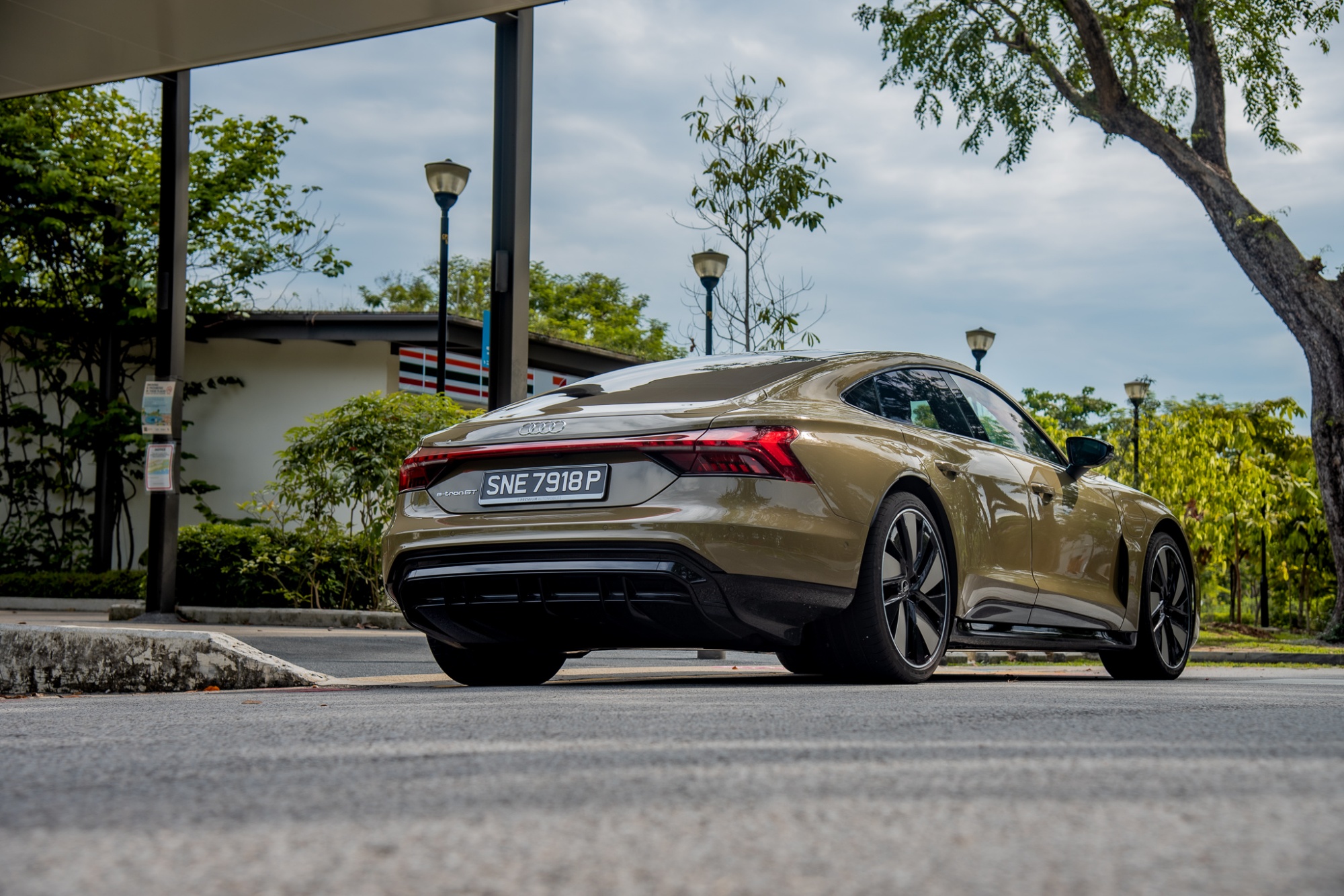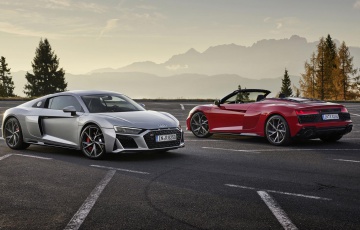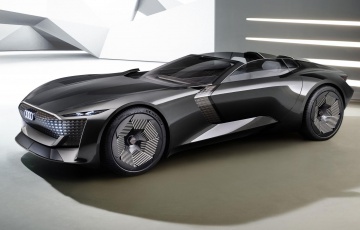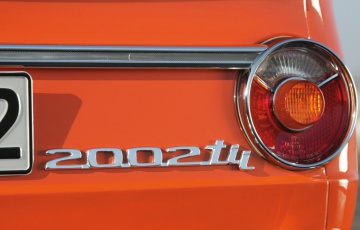Audi e-tron GT 2021 Review : Deus Ex Machina

Audi e-tron GT 2021 Review : Deus Ex Machina
Singapore - For the past 110 years or so, we have been living in the ICE age. That’s I.C.E. for internal combustion engine. However, with the whole automotive industry deviating from fossil fuels to electricity, an automotive enthusiast would naturally wonder about the state of current affairs.
Habitually, us petrolheads have grown accustomed to large displacement engines, loud exhausts and big speed. Growing up in an age where supercars with V8s, howling V10s or screaming V12s adorned our bedroom walls or PC screensavers, most would have a firm belief that there is no replacement for large displacement. Myself included.
That is, until I got into the passenger seat of the RS e-tron GT. It’s a car that does 0-100km/h in 3.3 seconds on boost, dispensing its full 646hp/830Nm prowess the instant you put your foot down. It hurls you back into your seat and keeps you pinned until you let off the throttle. After that spine-tingling experience, I emerged from the four-door GT with a single thought running through my muddled mind.
No one on god’s green earth needs that much power.



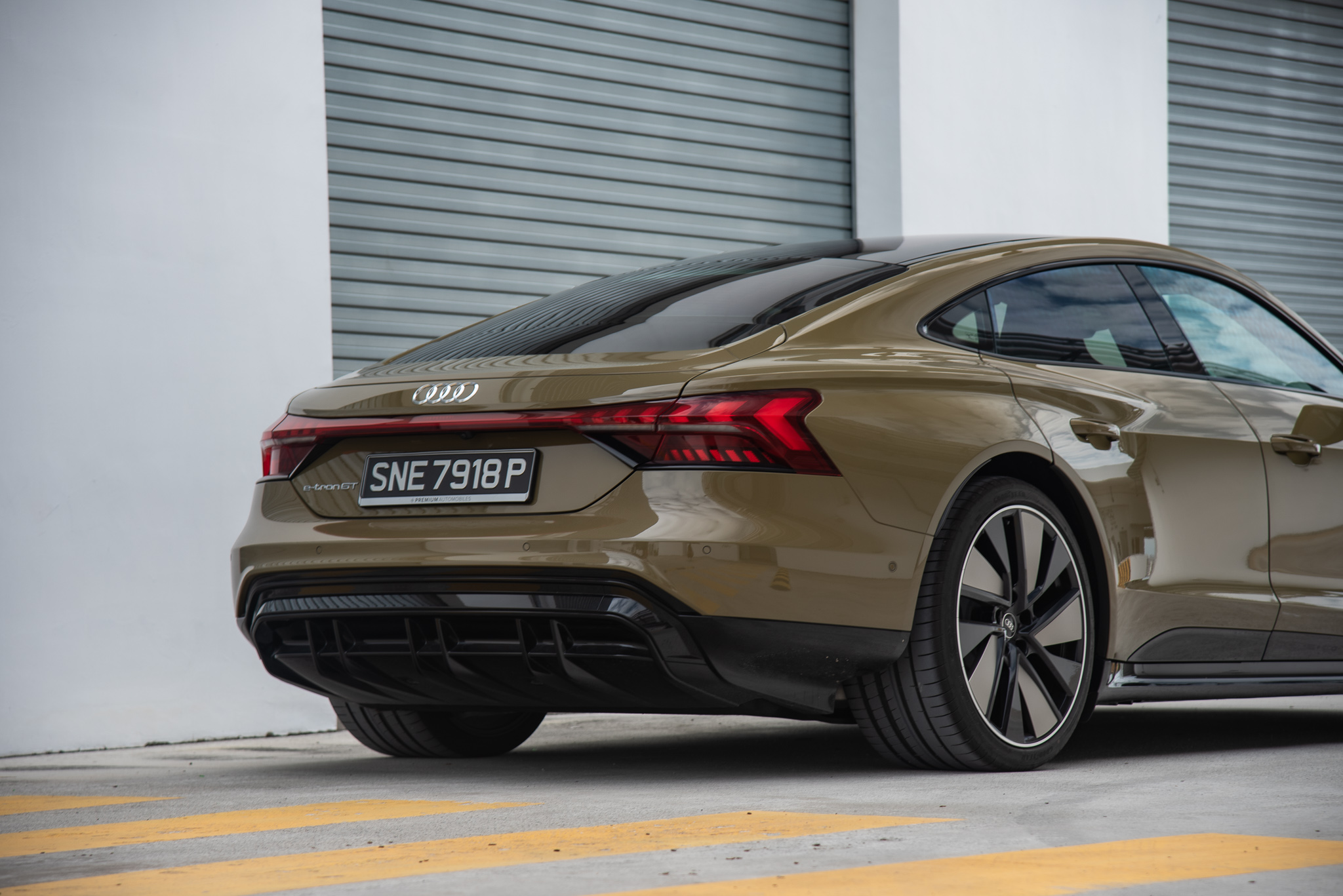
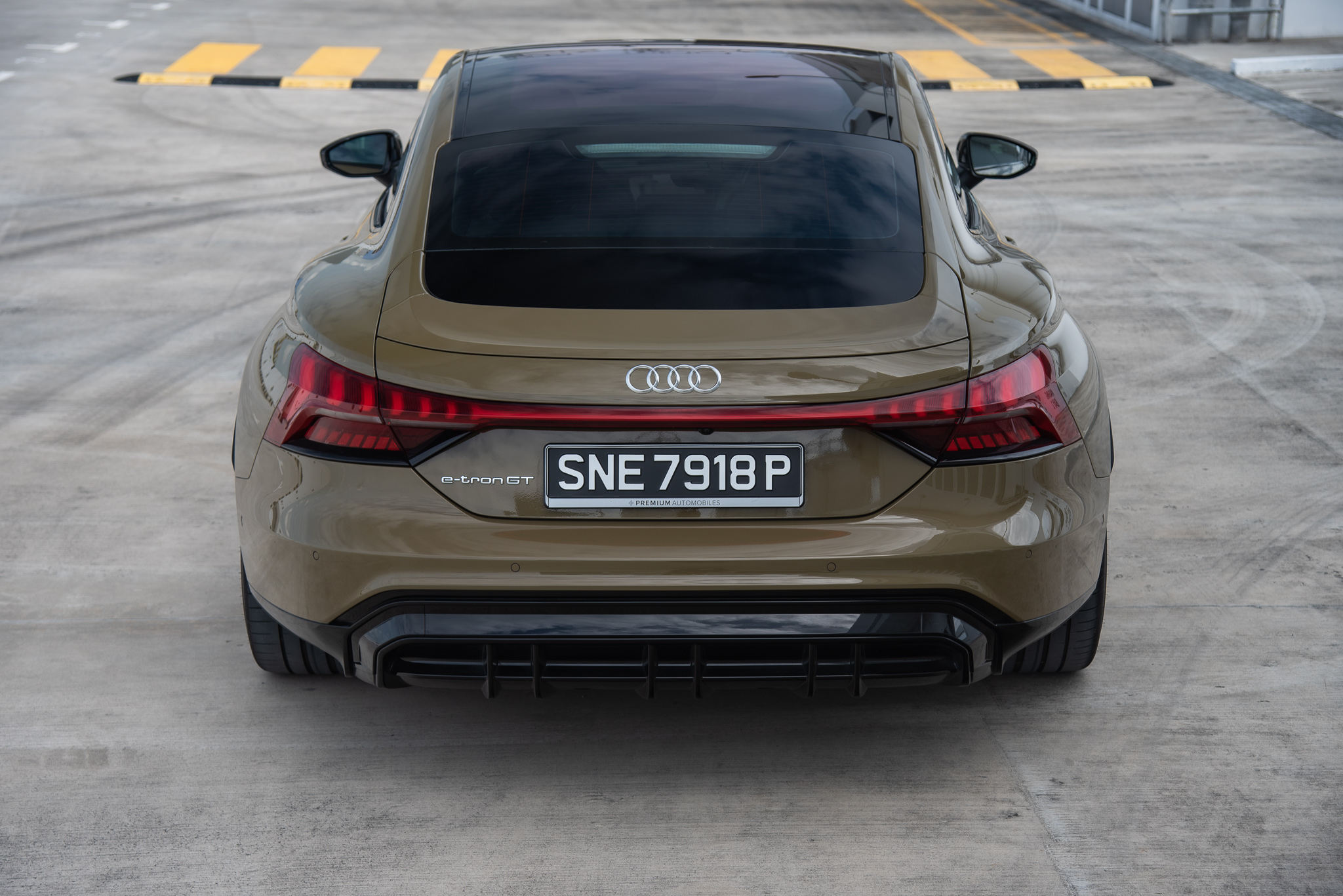

Perhaps then, the Audi e-tron GT is the sedate alternative to the ludicrous RS e-tron GT. It doesn’t have the same shocking power figures that its RS sibling does, but it’s still an electric performance grand tourer that happens to share the same 93kWh battery pack and dual motor drivetrain.
Crucially, it is a dead ringer for its RennSport sibling.
Typically, Audi’s RS vehicles like the RS 3 or RS 6 Avant would see the addition of massive vents and aero tweaks that impart them with more aggressive traits compared to their standard counterparts. However, the same can’t be said for the e-tron GT.
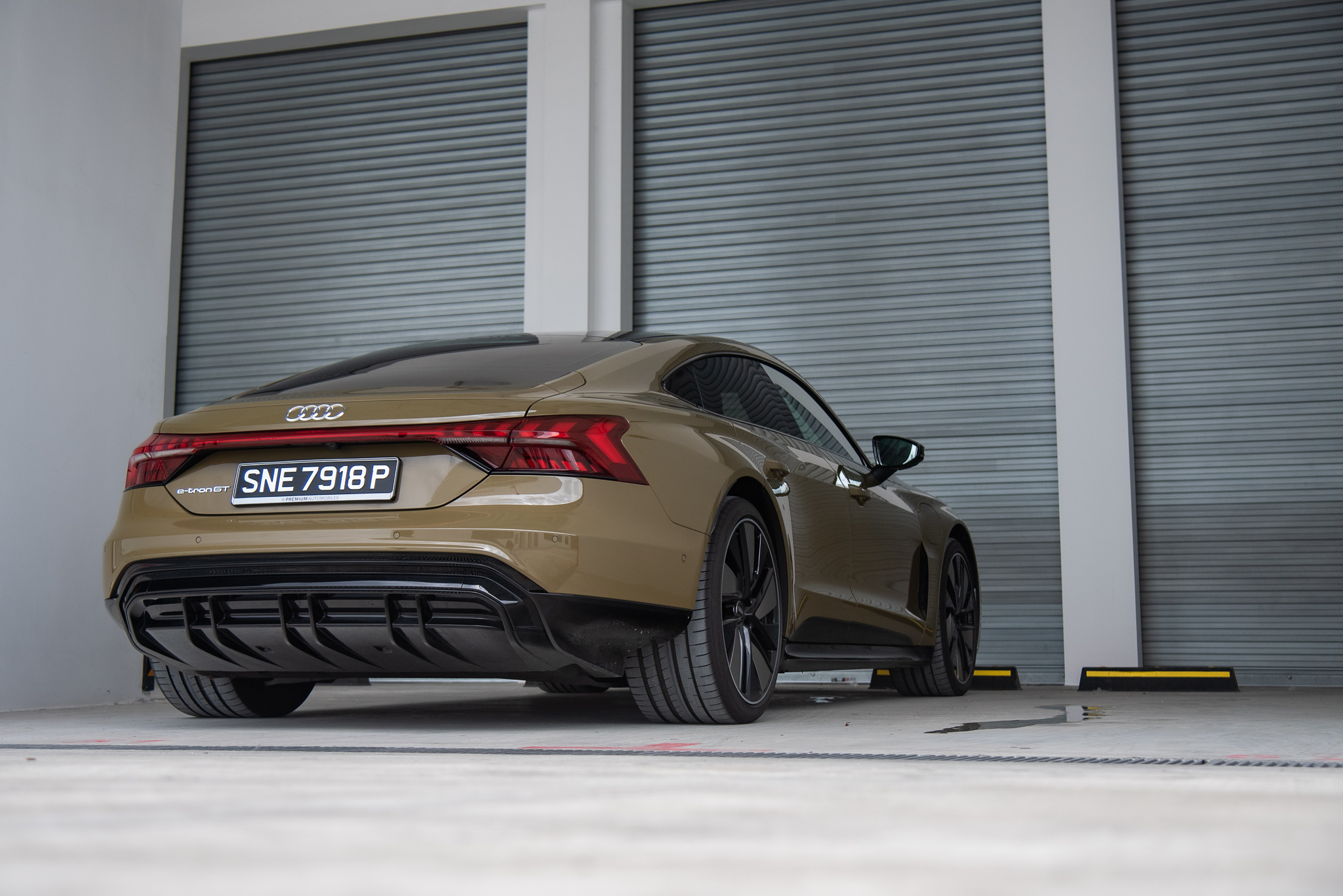
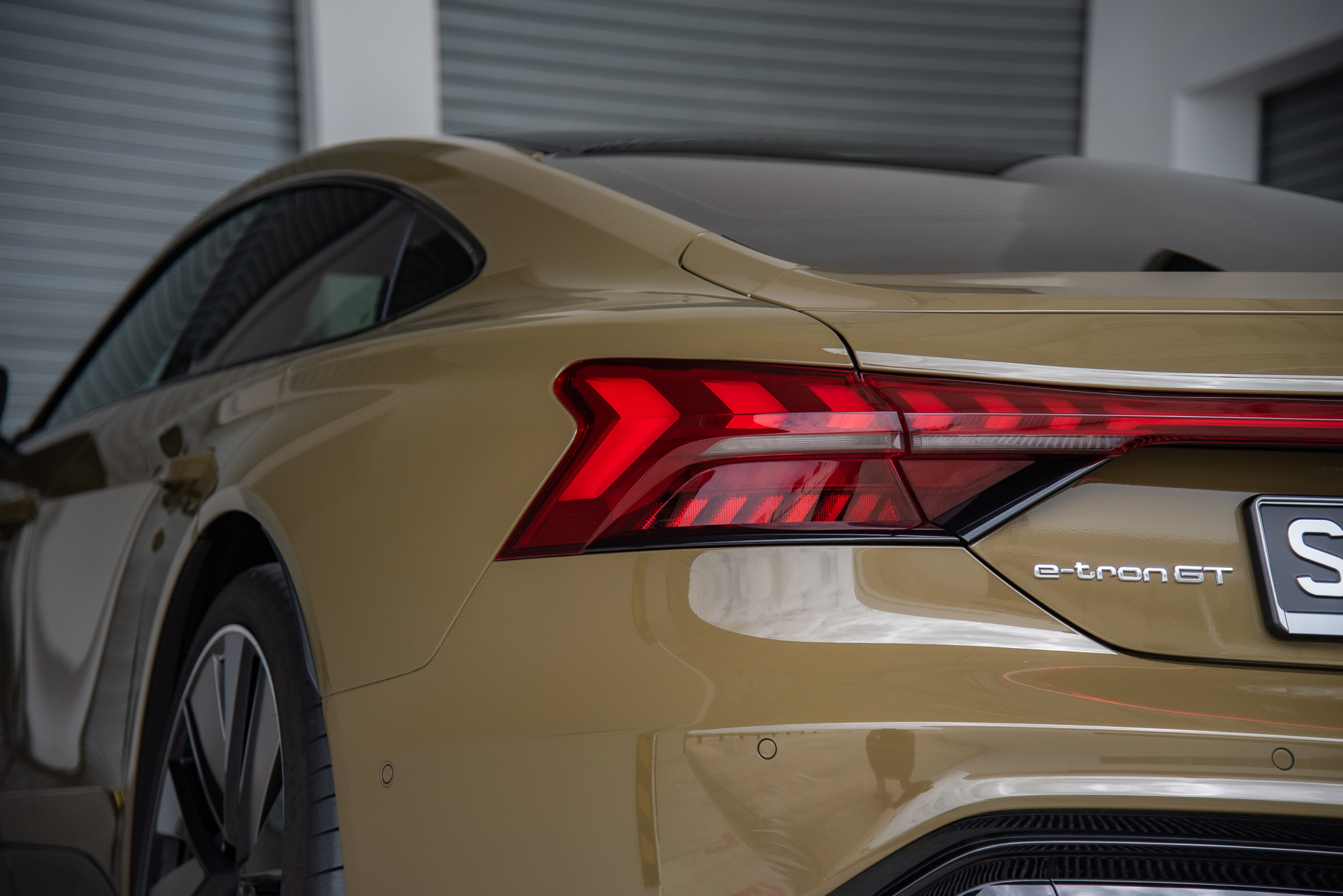
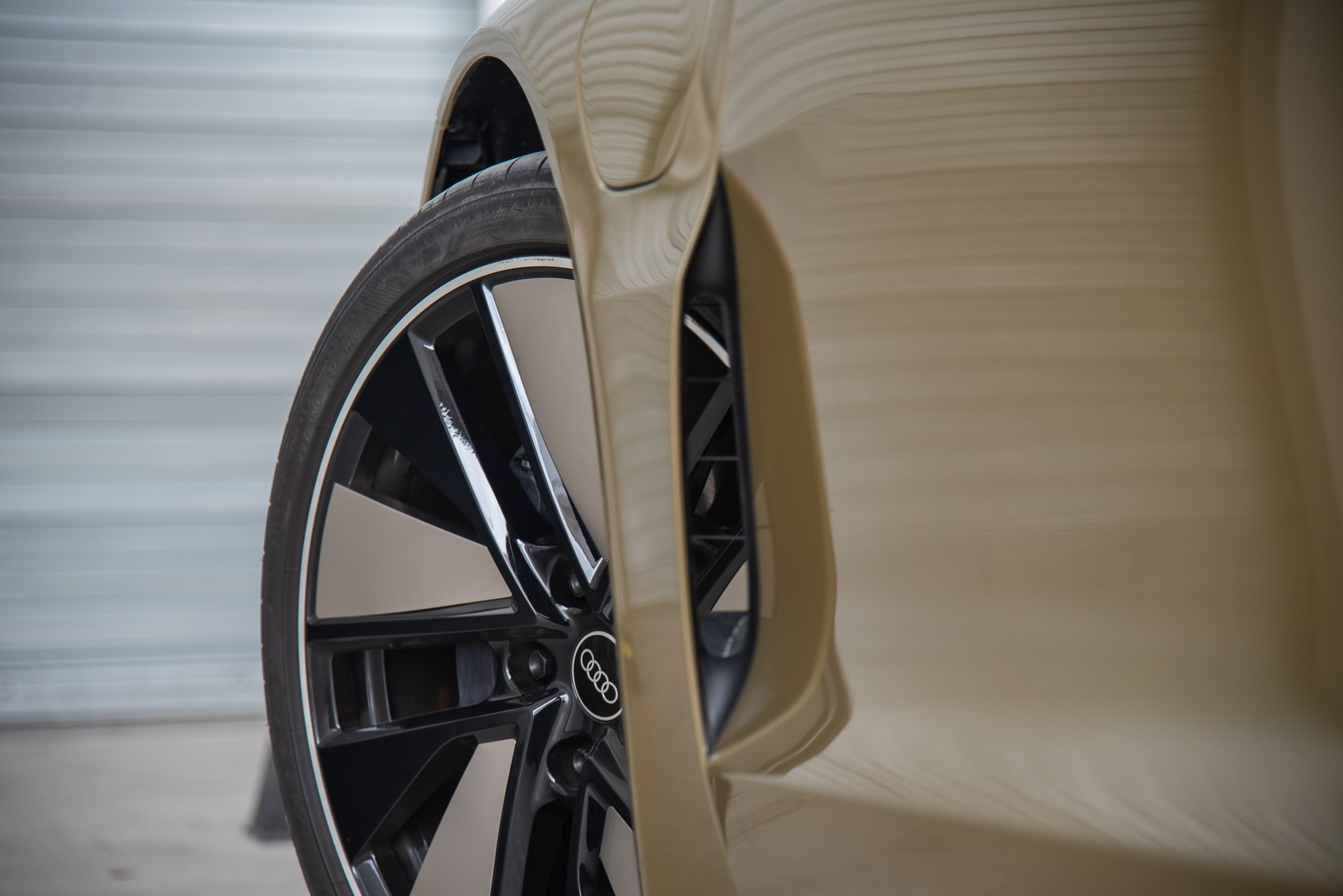
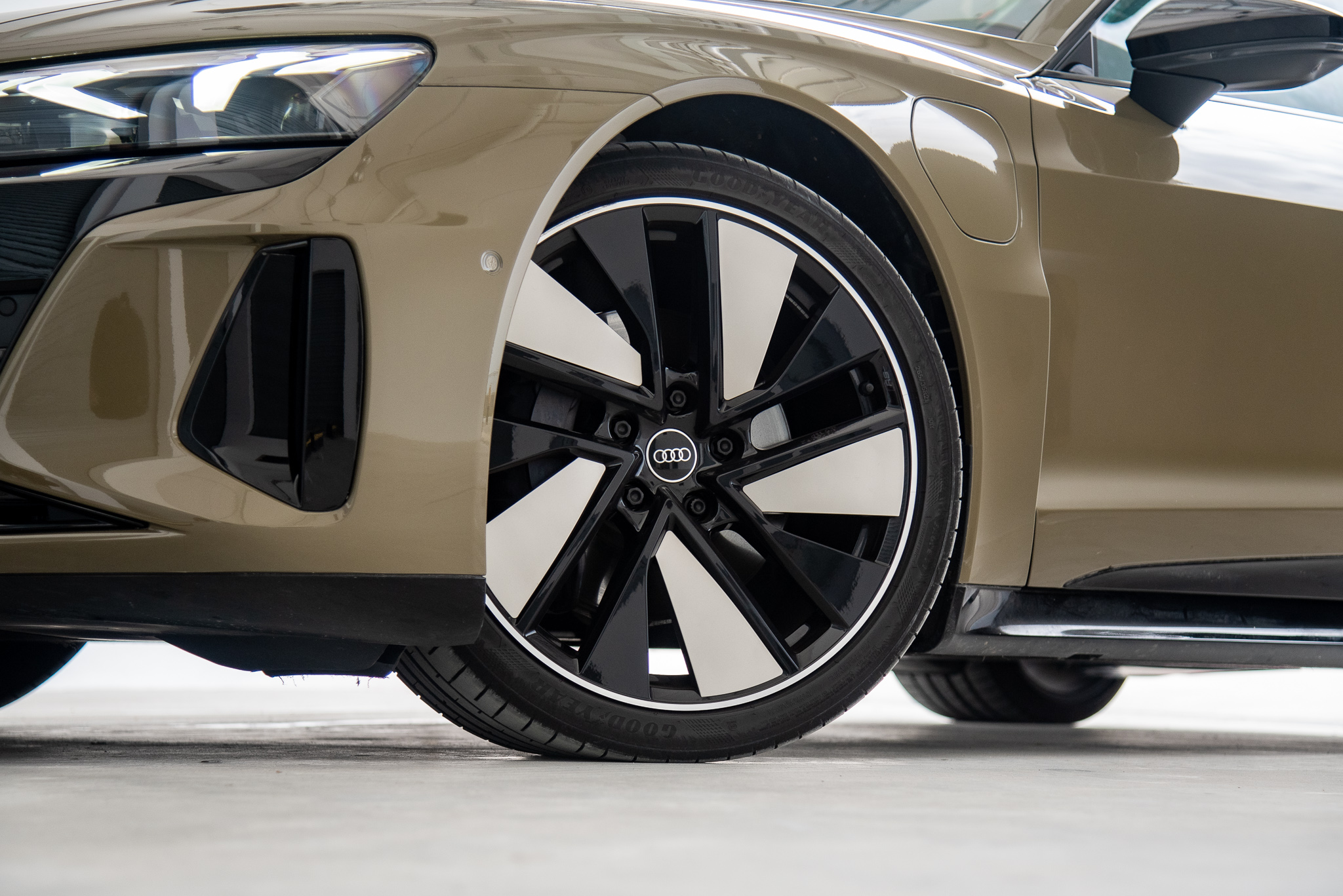
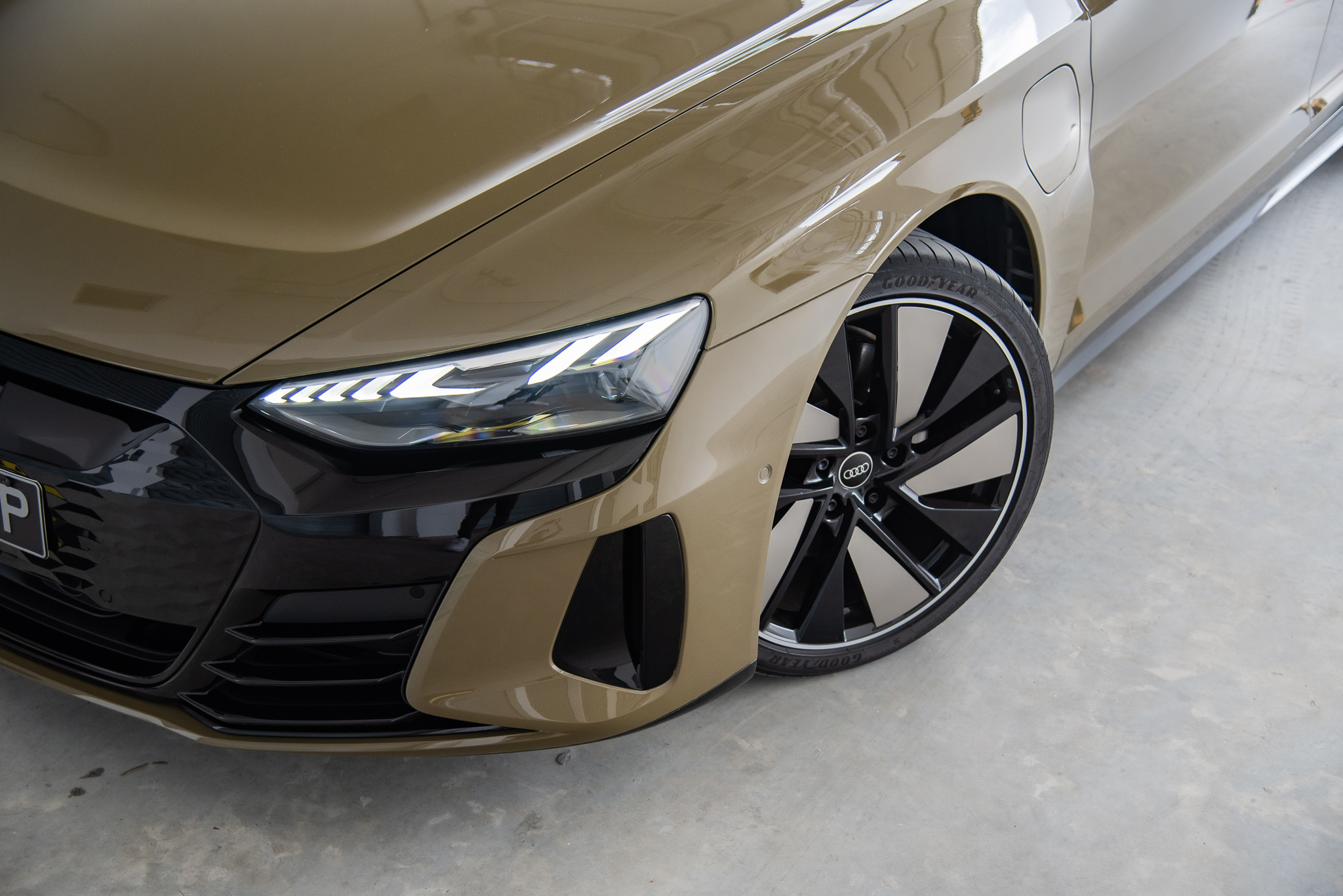
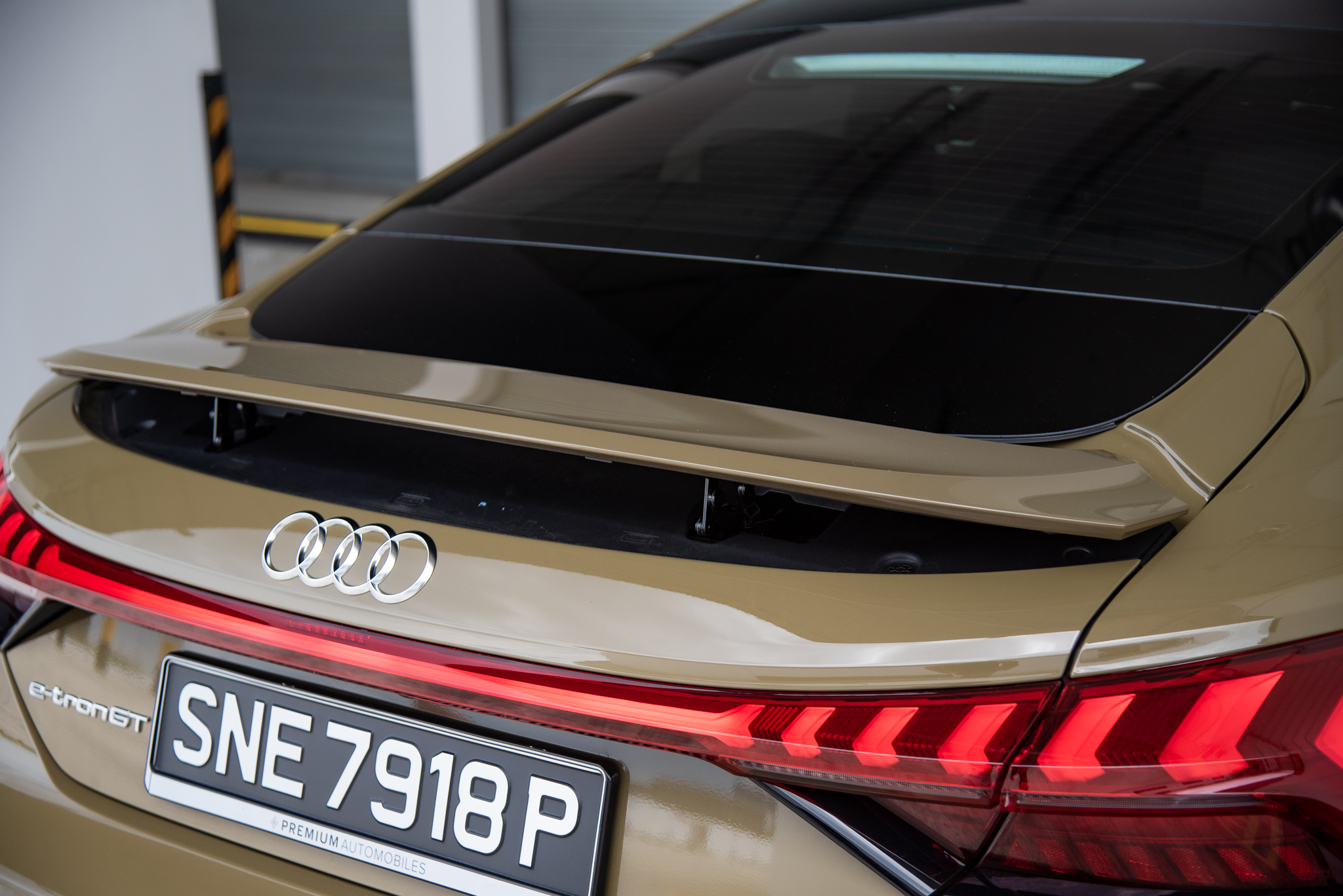
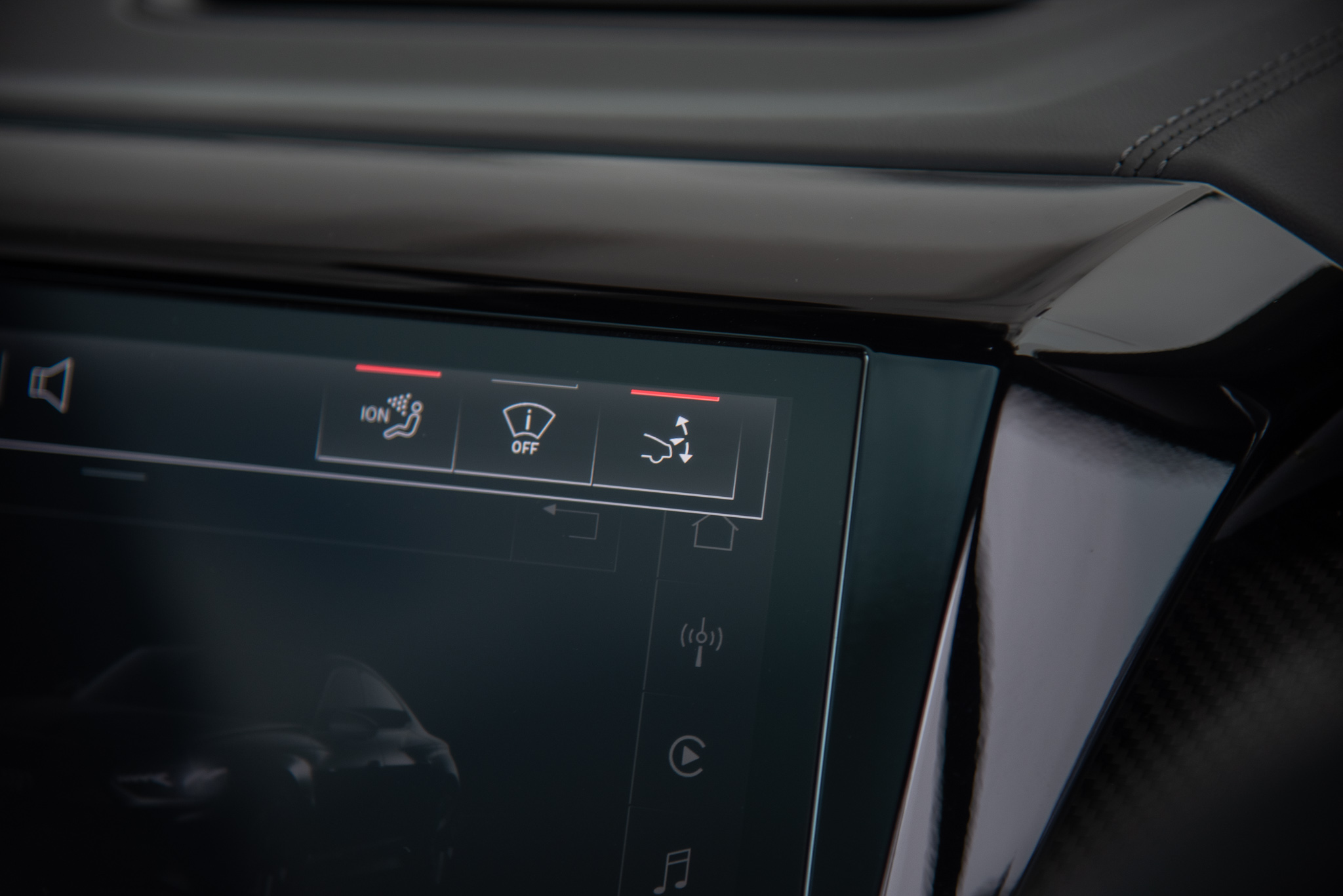
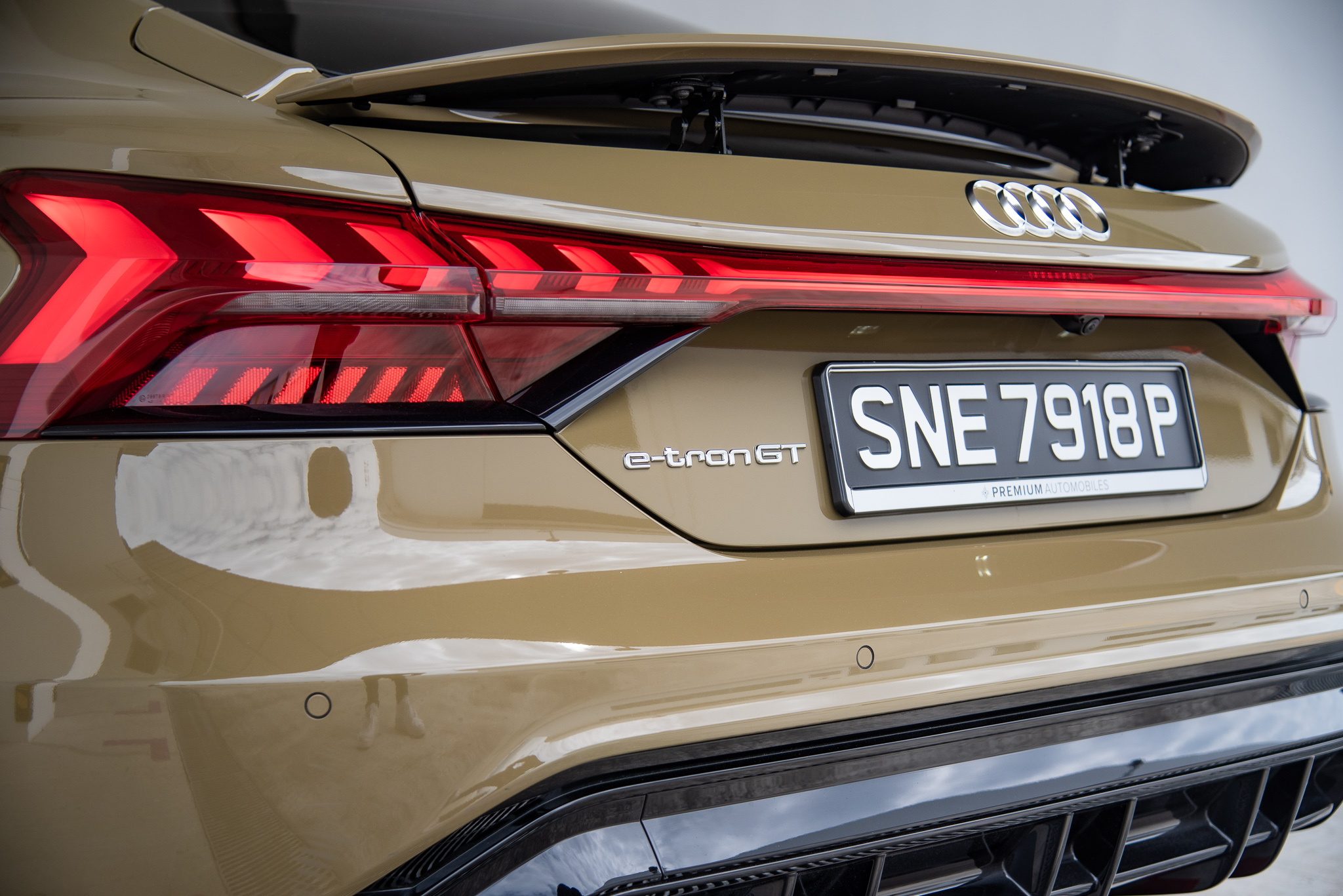
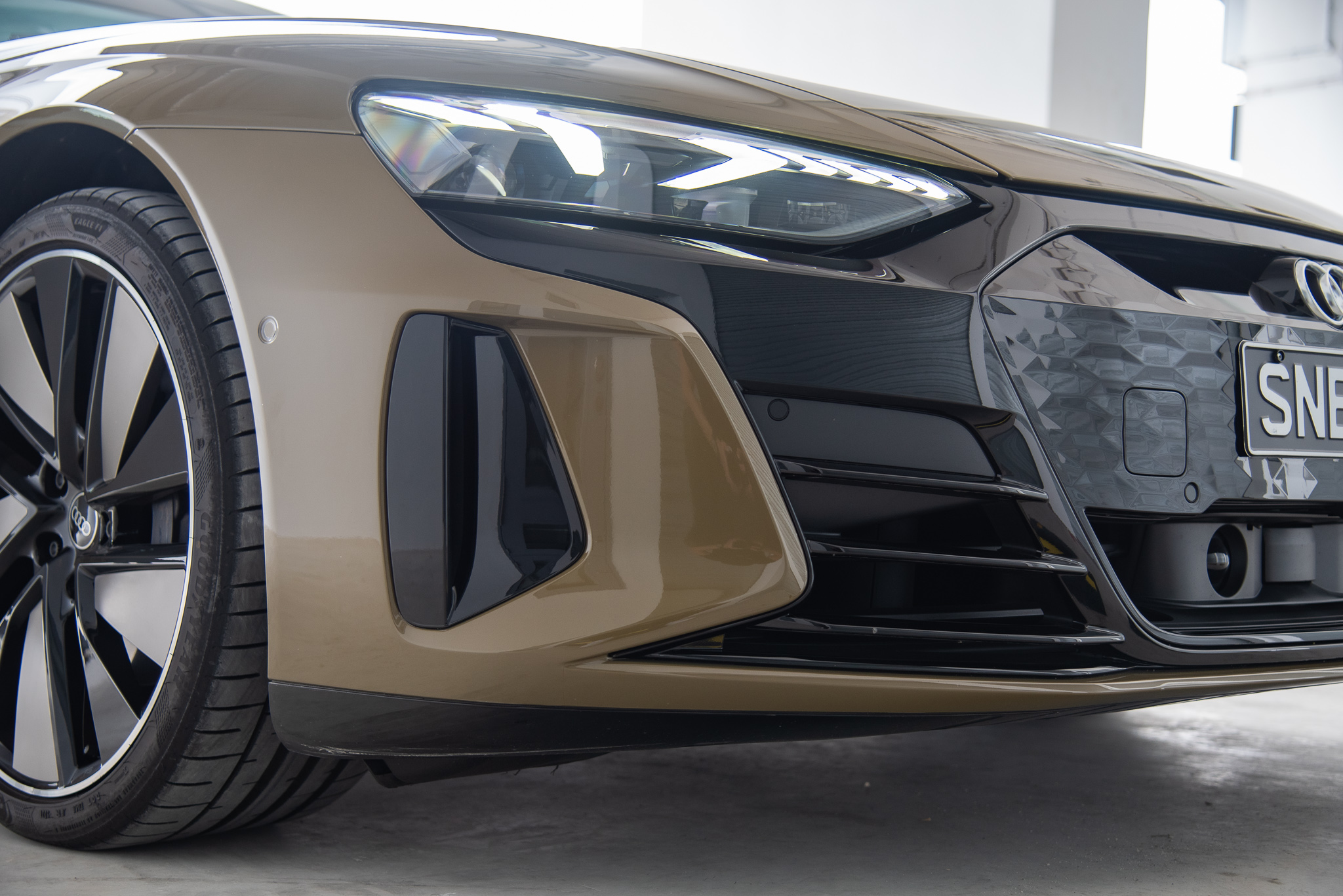
Badges aside, there are no other differentiating factors between this e-tron GT and the ludicrously quick RS e-tron GT.
It is still every bit as curvaceous and voluptuous as the RS car with its lean, lithe, low-slung body and blistered hips.
The front fascia is devoid of intrusions that inhibit airflow, allowing the wind to skim along its flanks to a sculpted tail end with a discreet spoiler that extends when the car gets up to speed.
It’s a beautifully designed car, this. Wonderfully sculpted and fabulously well-proportioned. But it’s a case of form follows function with the e-tron GT.
As pleasing as those curves may be, the subtle creases and vents in the bodywork aids the car in achieving a drag coefficient figure of Cd 0.24. A perfect harmonisation between art and science.
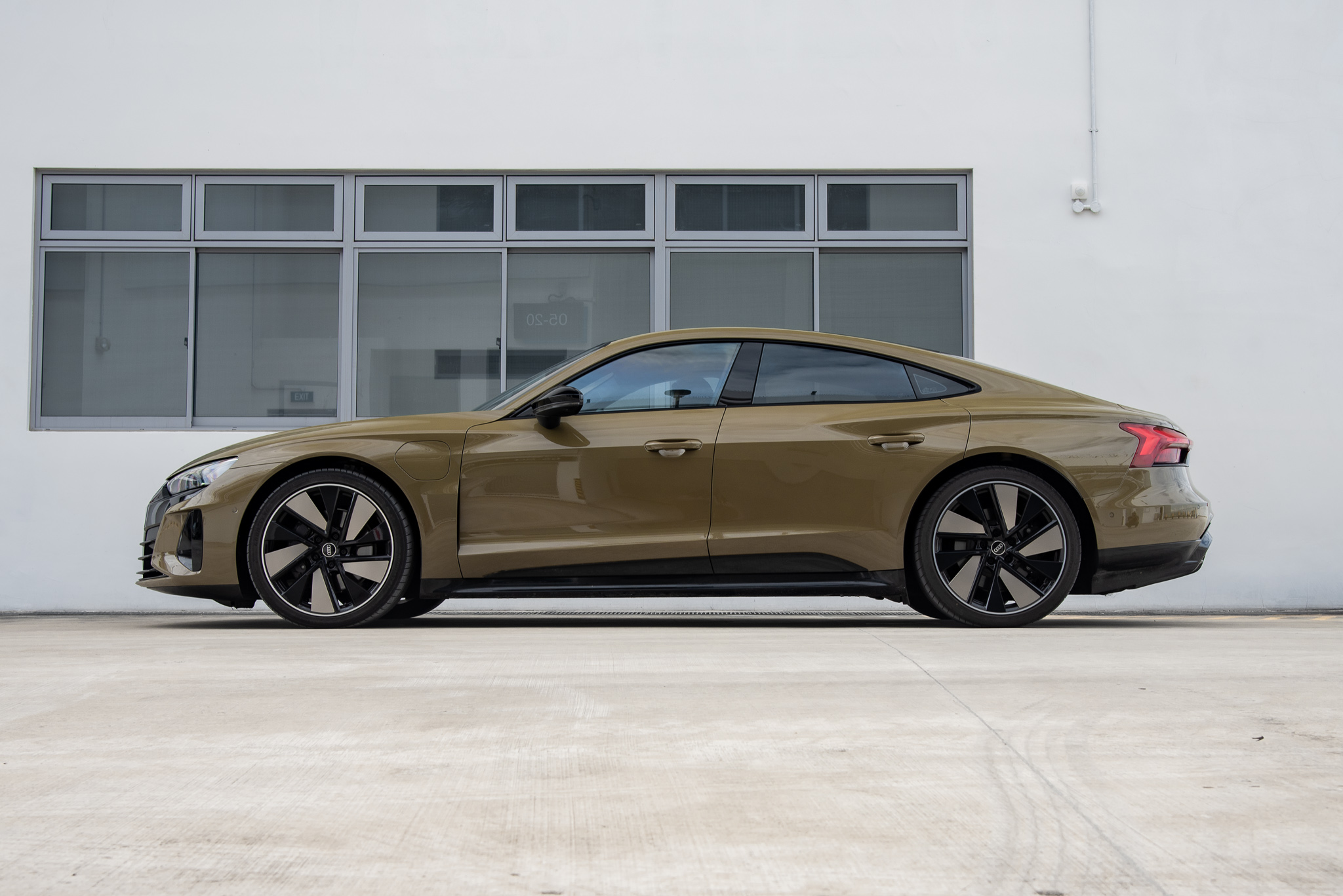
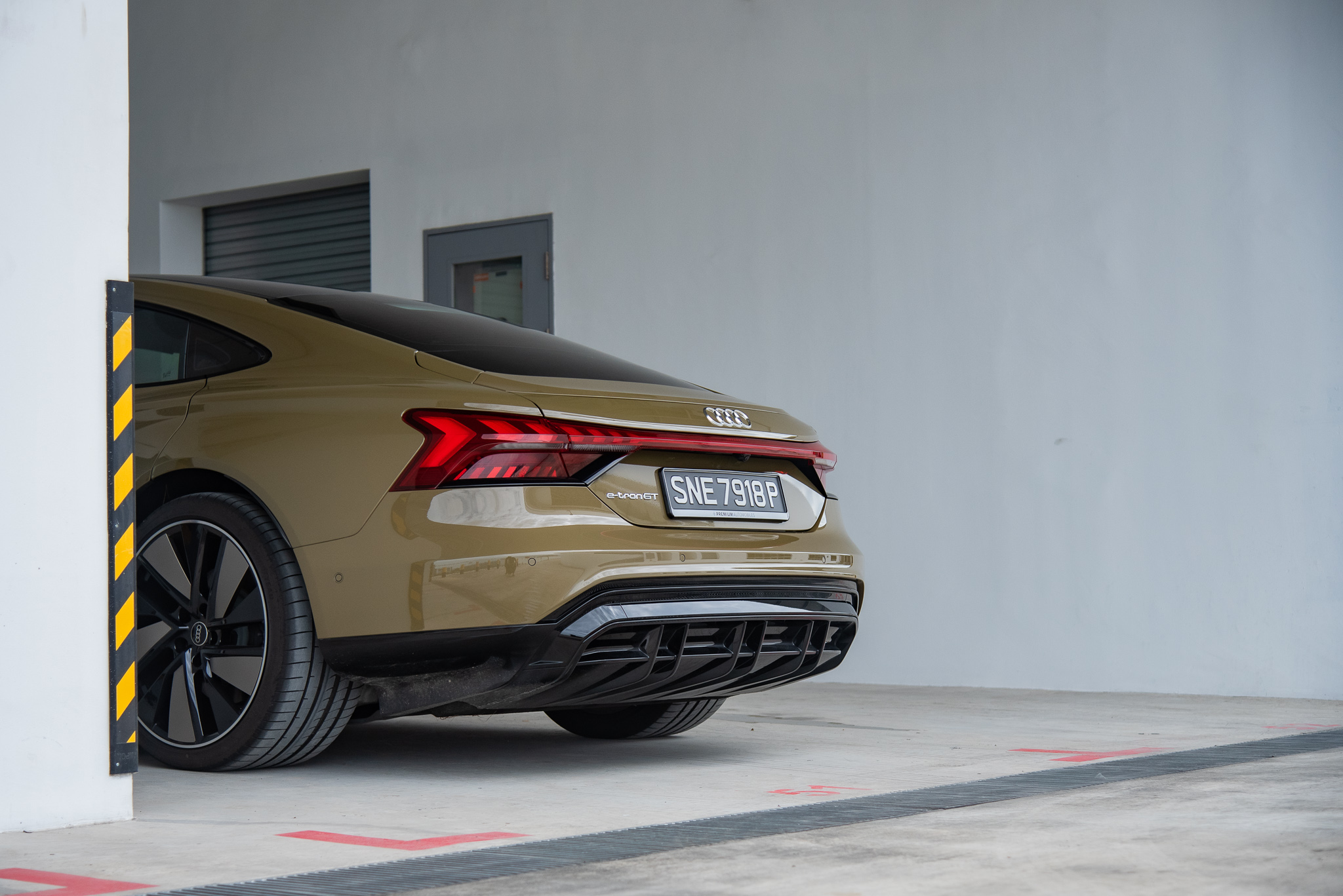
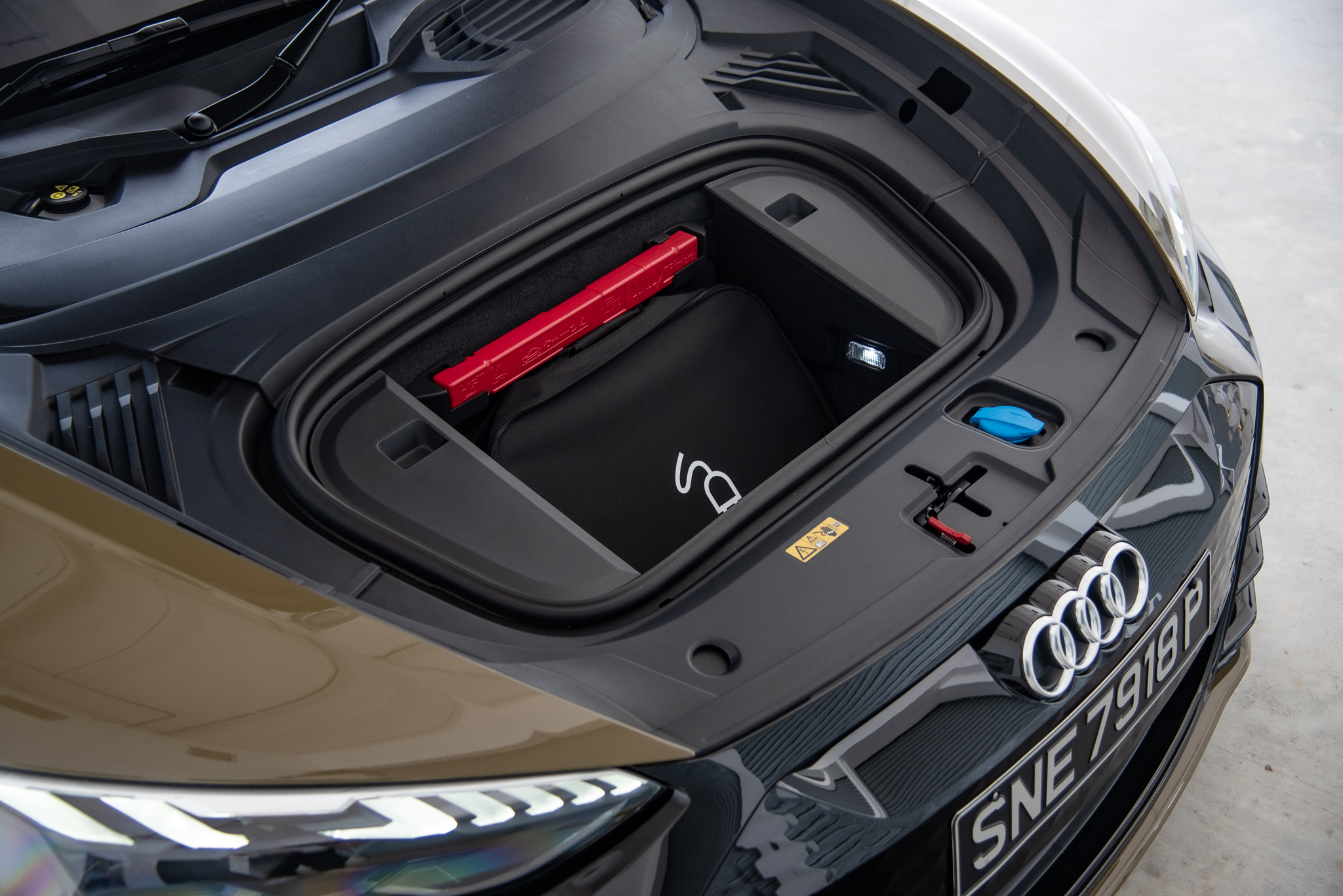

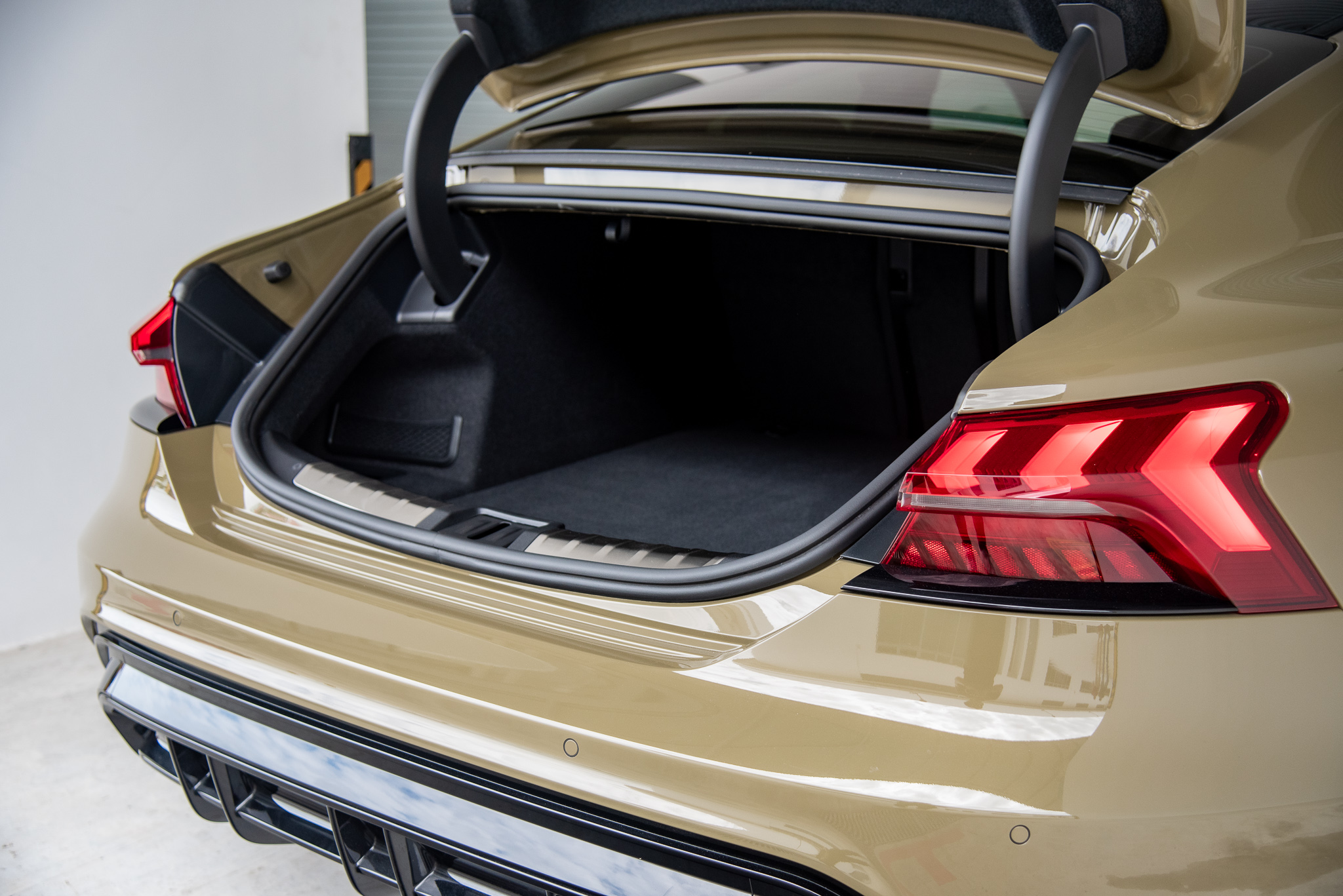
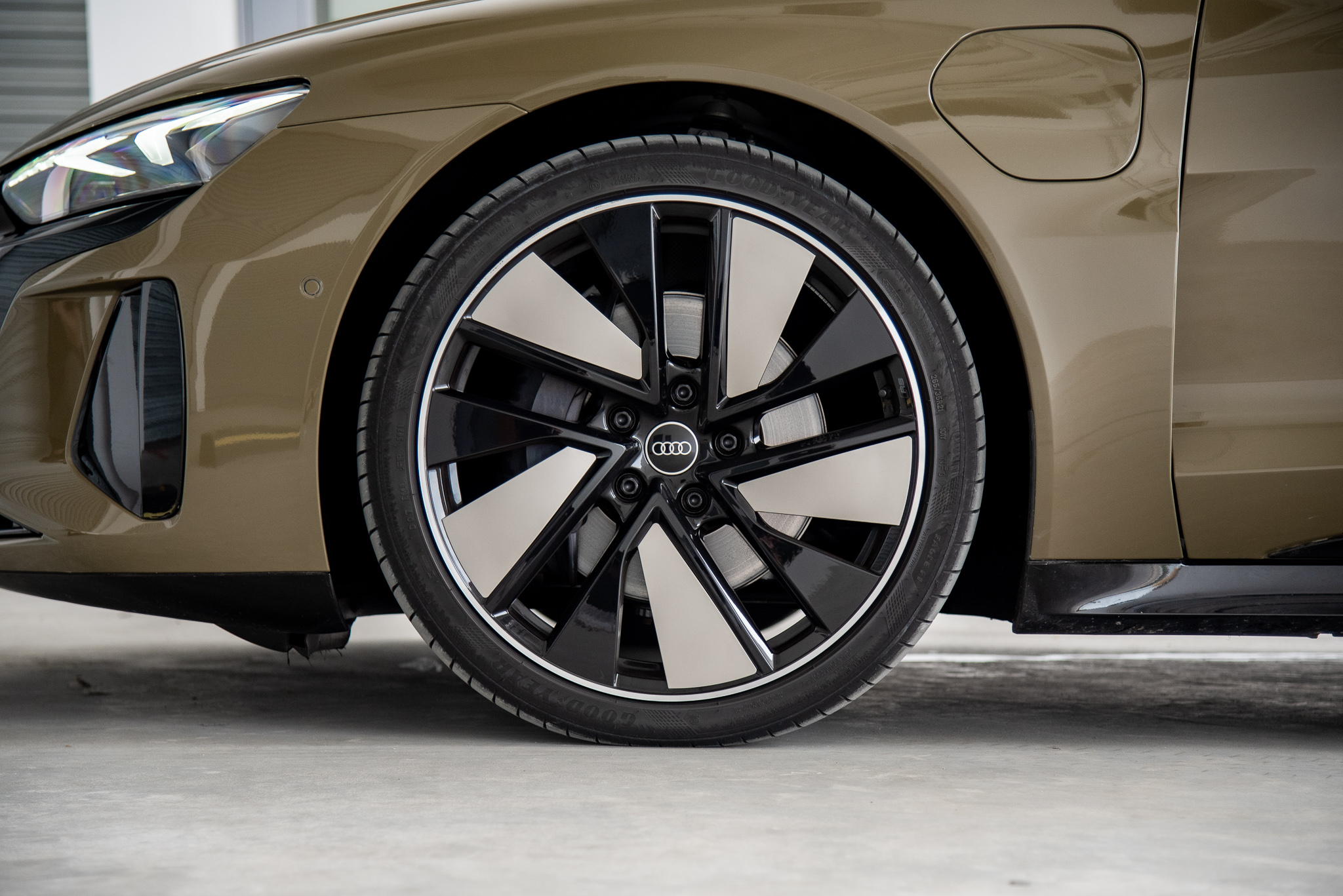

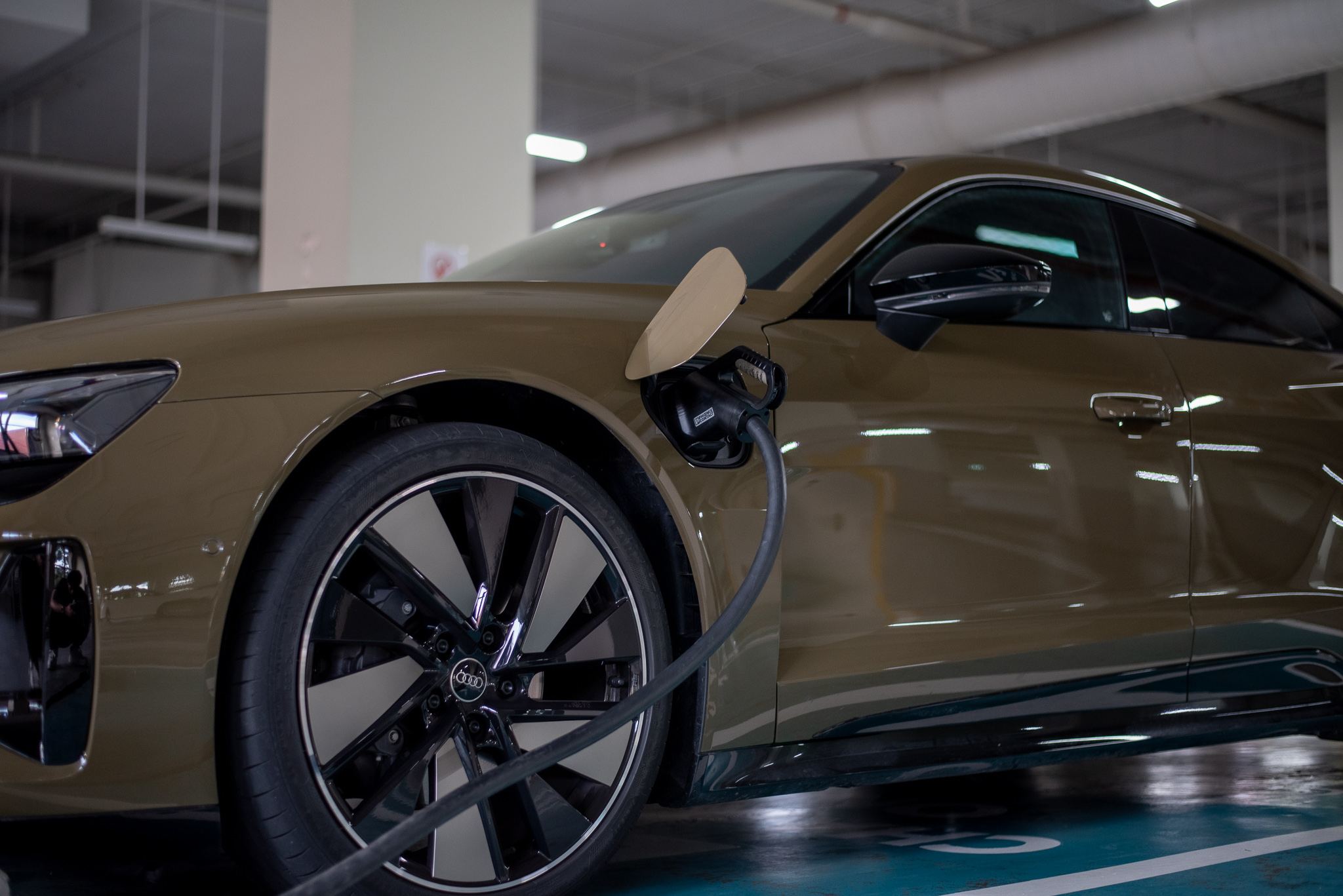
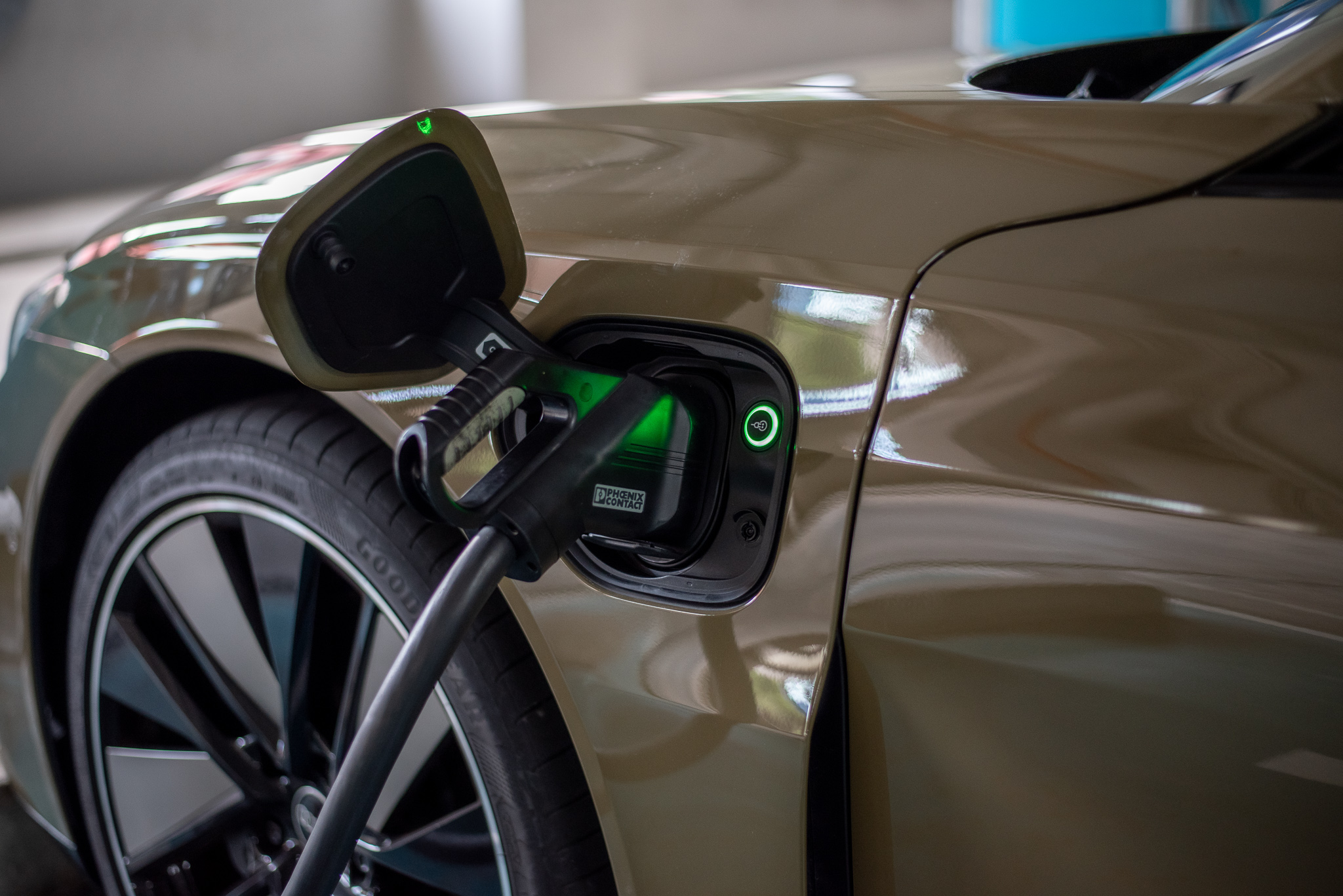
It’s worth noting that this car shares 40 per cent of its components with the Porsche Taycan.
Of course, the Porsche might turn more heads than this will, but that’s the beauty of it.
The Audi is more placid and isn’t overzealous in showing off its performance or EV credentials.
It isn’t as loud or “in your face” like some other EVs, especially if you spec one in a more subdued colour like this unique tactical green metallic.
As eye-catching as it may be, the Audi badge up front endows it with some degree of discretion. That is, until you put your foot down and the car surges ahead before bystanders can even get a glimpse of it.
It might be the more sedate alternative to the RennSport, but this e-tron GT still produces 476 horsepower and 630Nm of torque from its two electric motors.
In boost mode, that horsepower figure goes up to 530, which is enough to propel this GT’s almost 2.3-ton mass from 0-100km/h in 4.1 seconds.
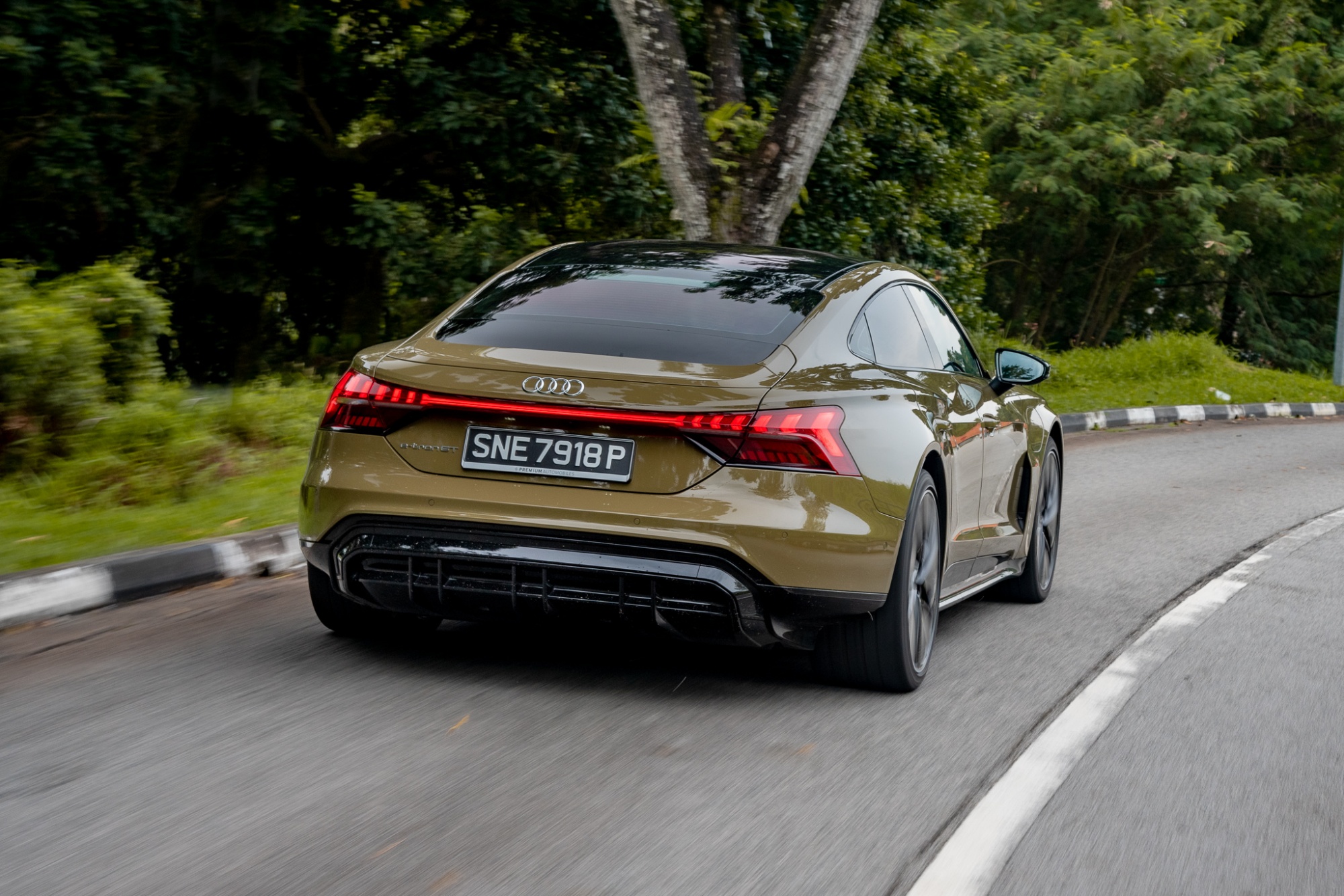
Yes, it doesn’t quite have the knock your socks off pace that the RS e-tron GT does, but is still disarmingly potent. That 4.1 second sprint time feels much quicker in practice thanks to its practically vertical torque curve when you mash the throttle in Dynamic mode. Sure, it’s an effective method of covering ground, certainly not the most economical method of using electricity. Though it sure as hell is a fun way to do so.

Because it doesn’t have the sheer pace of the RS, you’d need much less corrective opposite lock if you coax it into a corner a little over-enthusiastically.
Even if you send it hard, you’re very rarely in the need of more grip from those massive tyres (265mm in the front, 305mm in the rear).
With its quick steering rack and wonderfully analogue levels of feedback, you do get a very good sense of what the front tyres are doing relative to your steering inputs. Almost as if your hands are communicating with the car through telepathy.

And when you come onto a straight bit of road, put your foot down and there’ll be a momentary pause as two-speed gearbox in the rear switches cogs before the car surges ahead again.
However, when left in its more sedate driving modes like comfort or efficiency, and that steep torque curve levels out to get you up to speed in a more gentle fashion.
Our particular test car isn’t fitted with the adaptive air suspension system you’d find on the RS car, but it still does a very decent job of ironing out imperfections in the asphalt.
It is a big, heavy electric GT after all, and it isn’t shy to remind you that it isn’t trying to be a luxury limousine. Even when you step into the cabin.
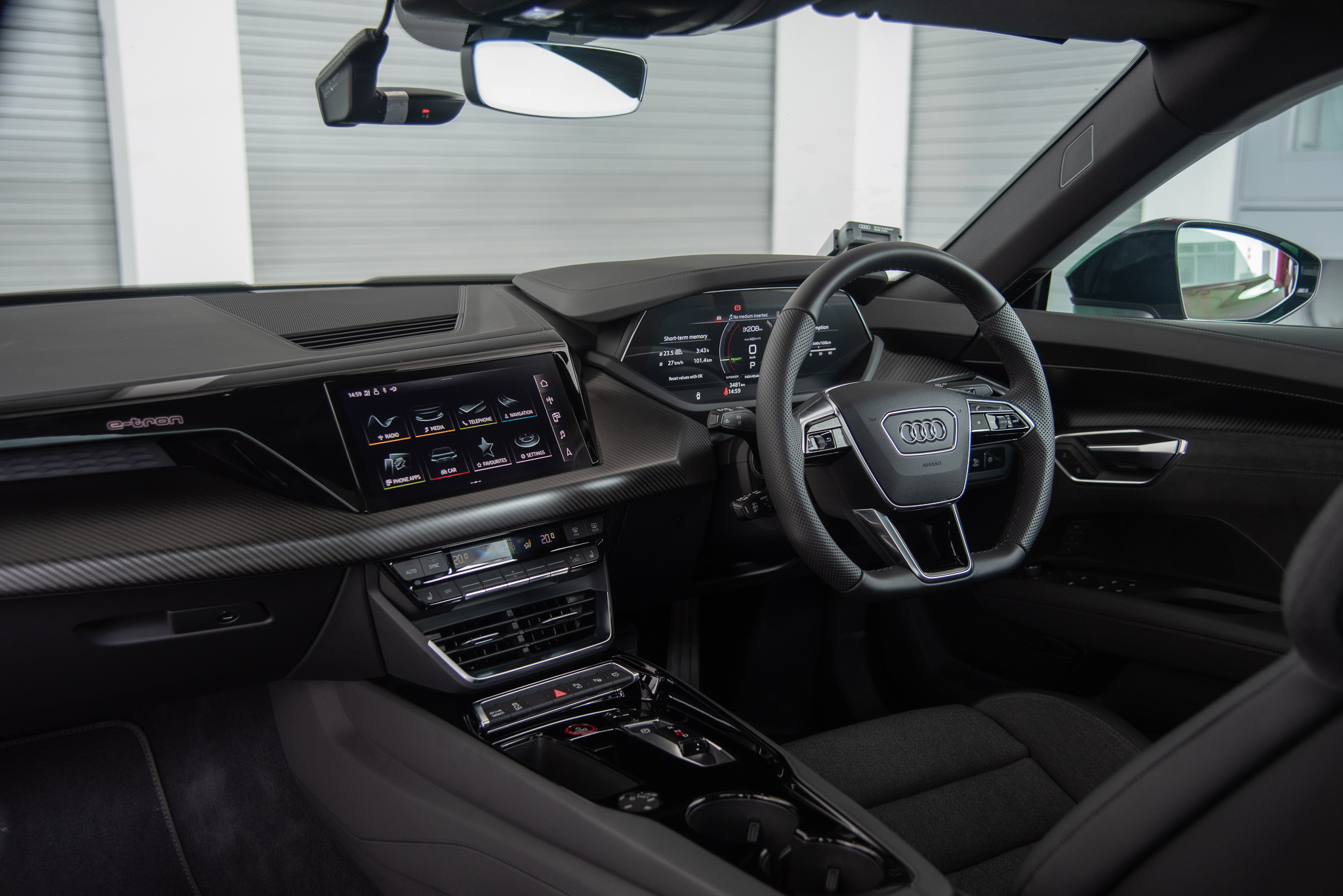
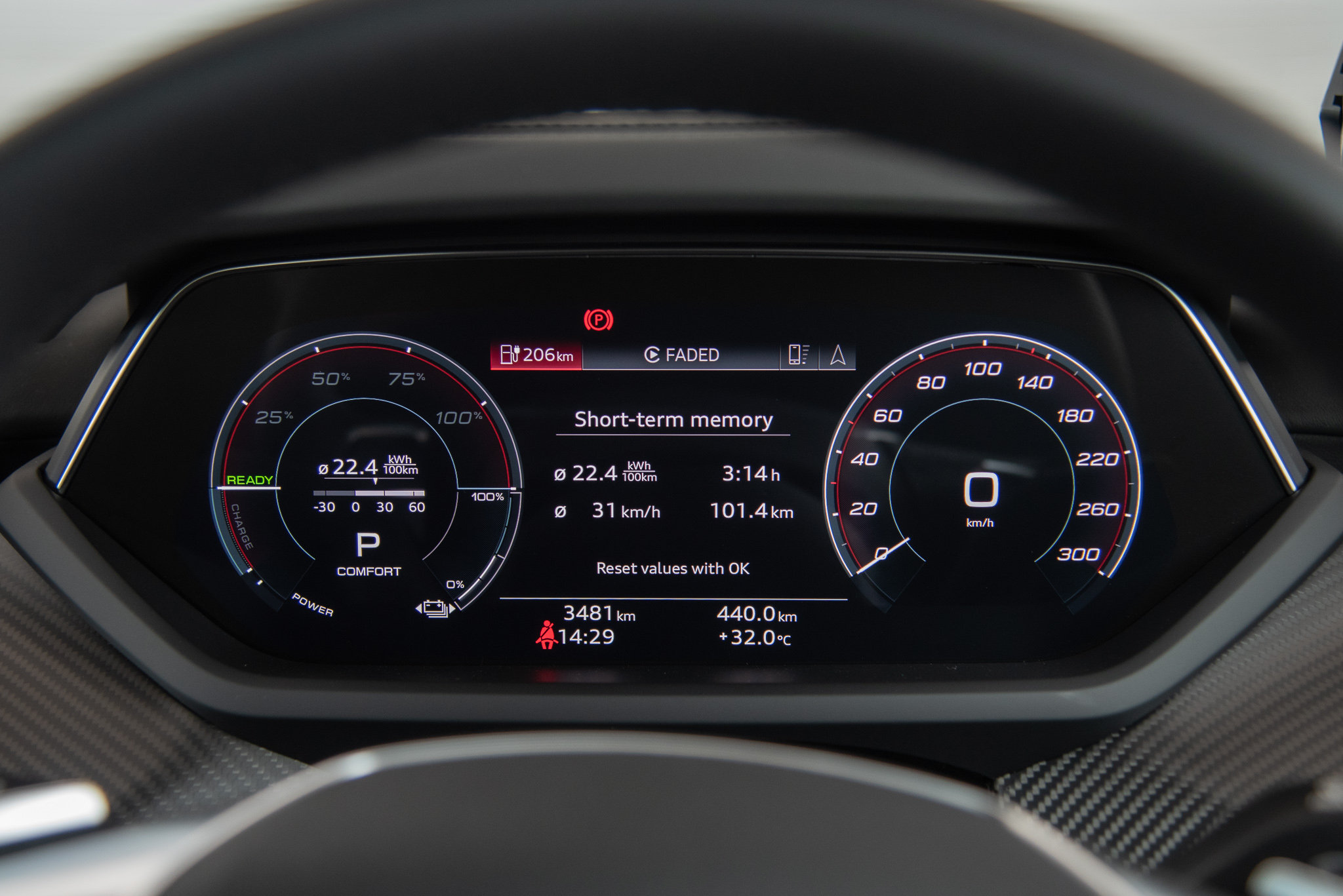
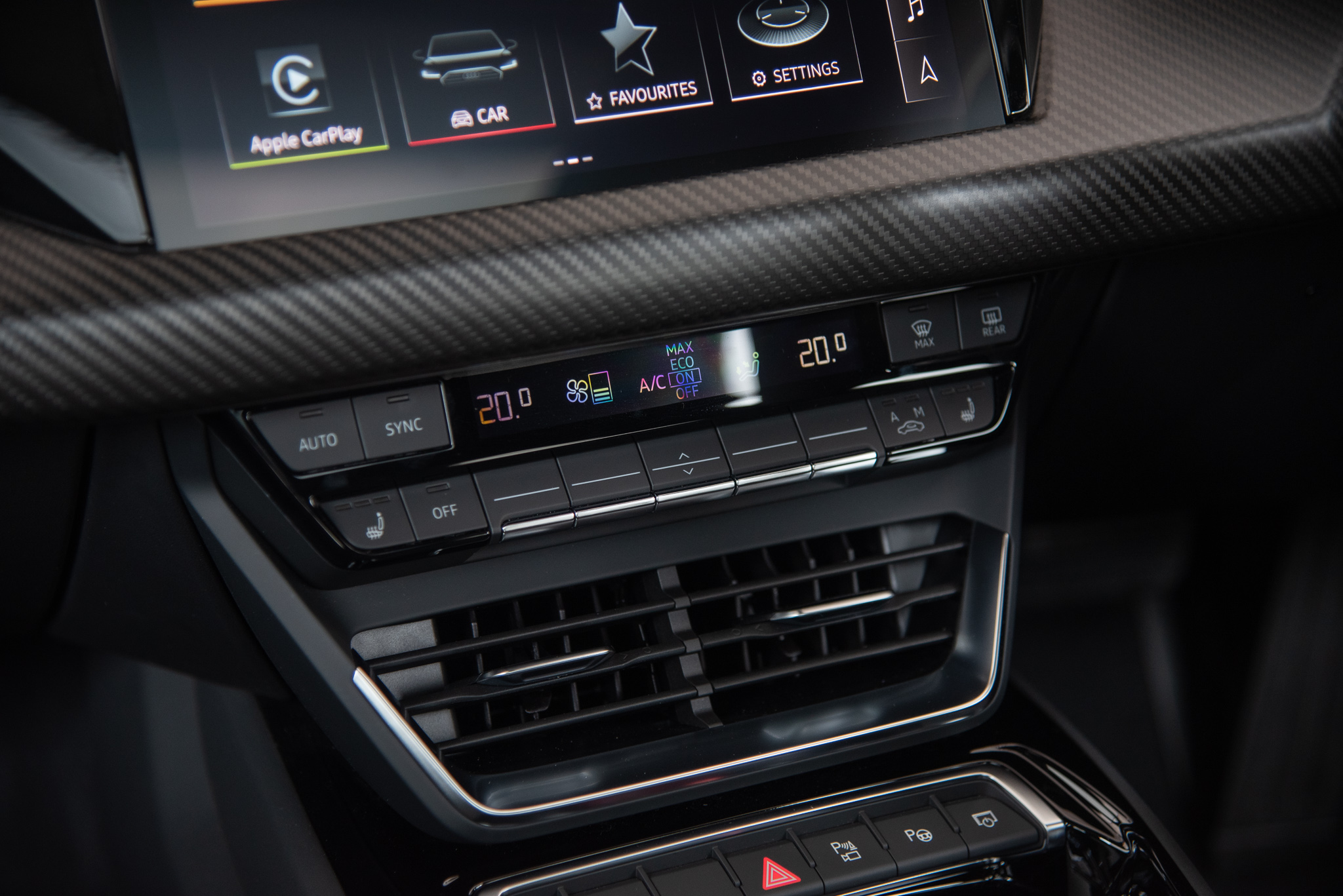
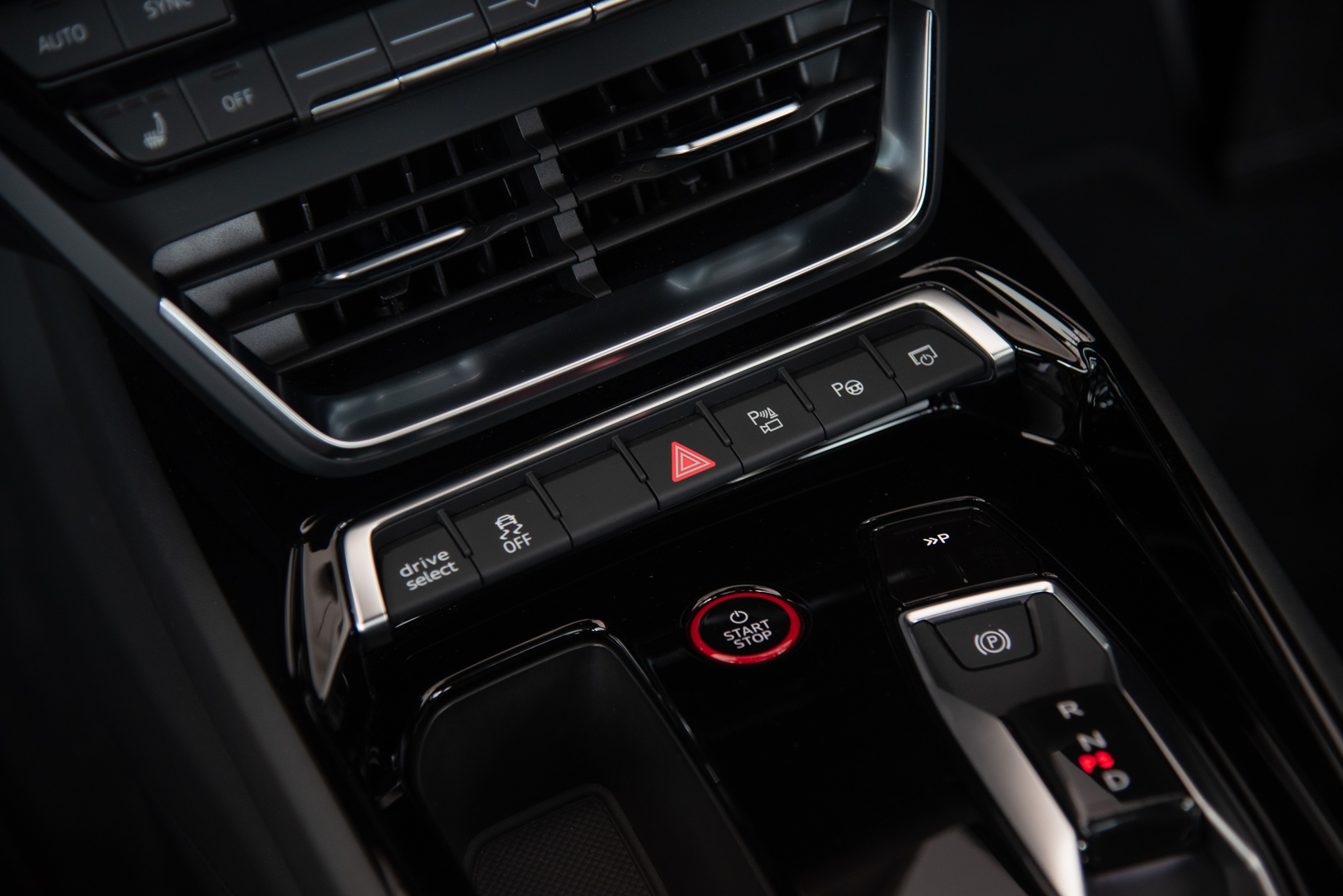
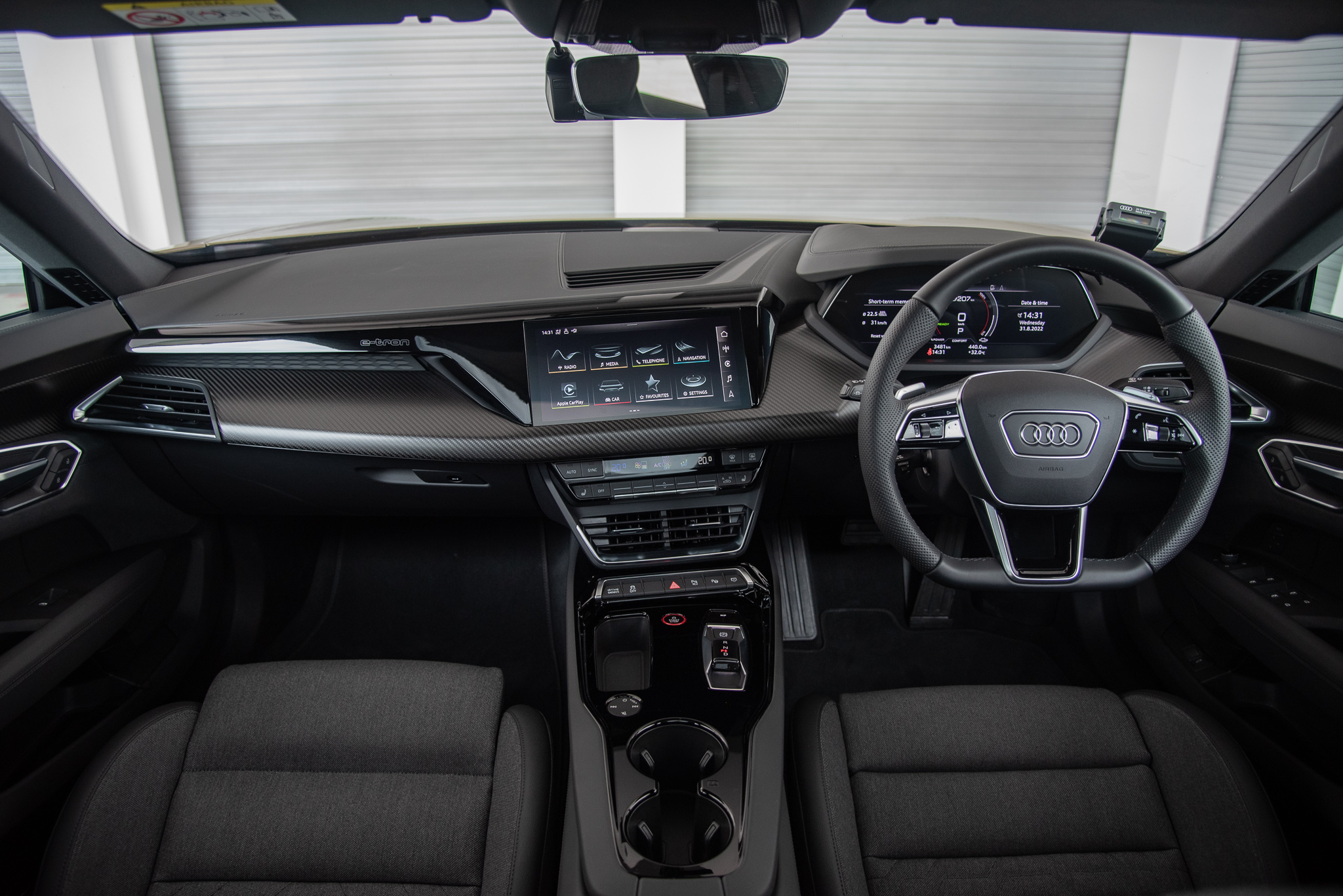
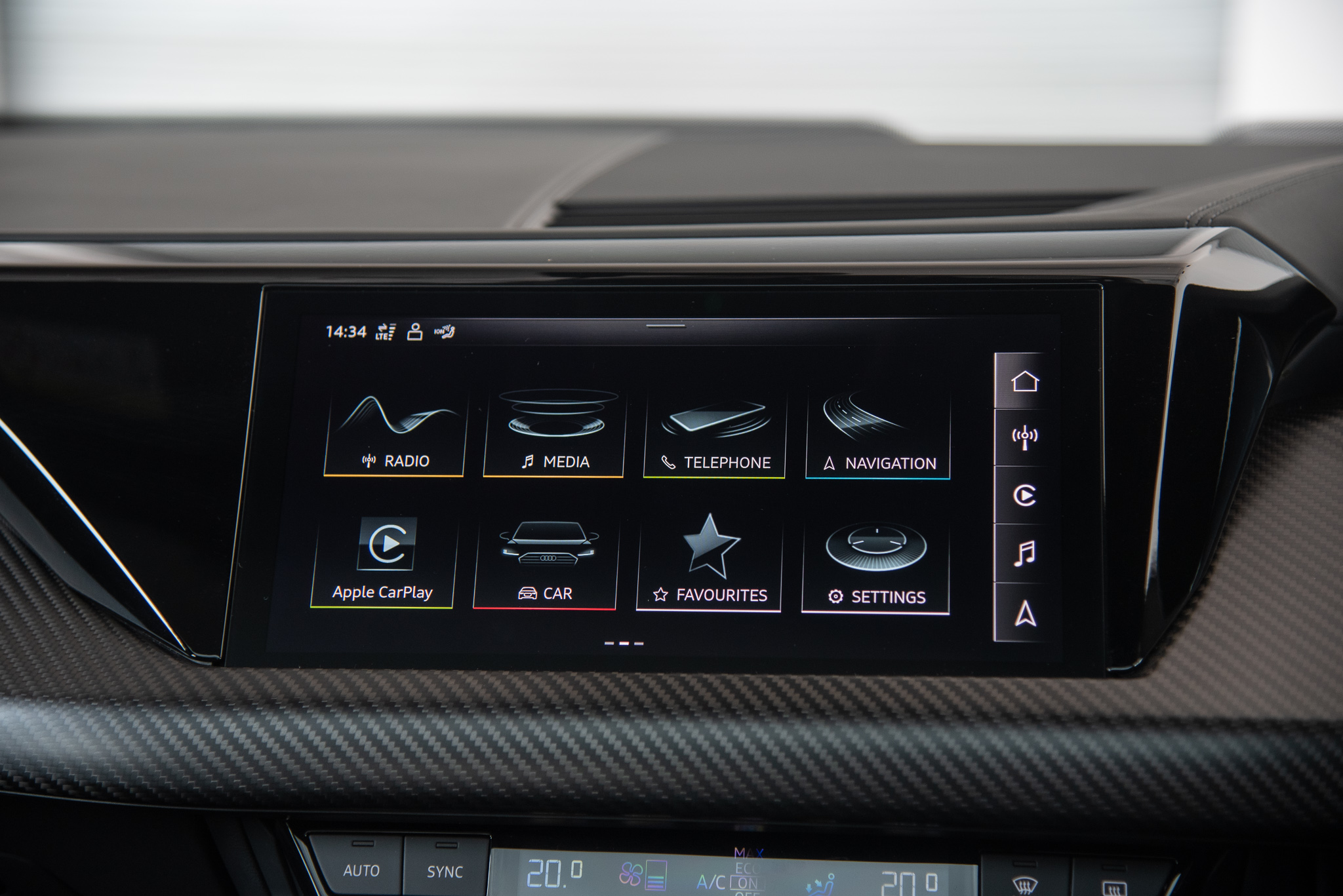
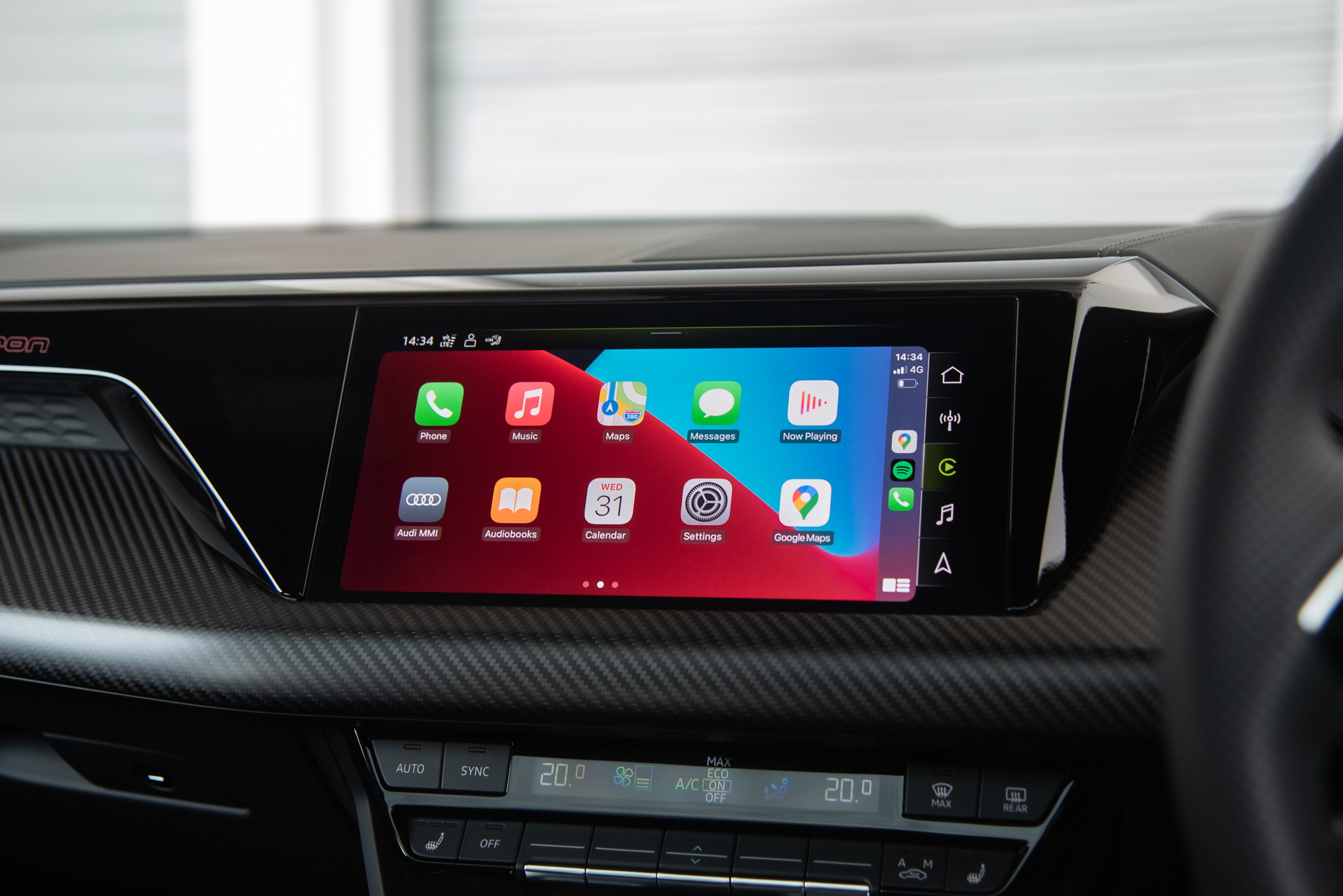
It’s a wonderfully analogue cabin, which is a refreshing change from the multitude of screens you get in most modern EVs, like the e-tron S Sportback for instance.
Apart from the MMI infotainment screen and the virtual cockpit gauge cluster, every other interface in the e-tron GT is analogue.
There are two rows of buttons, one for the climate controls and the other for the car’s other functions such as your parking cameras, hazards, traction control and the drive select button.
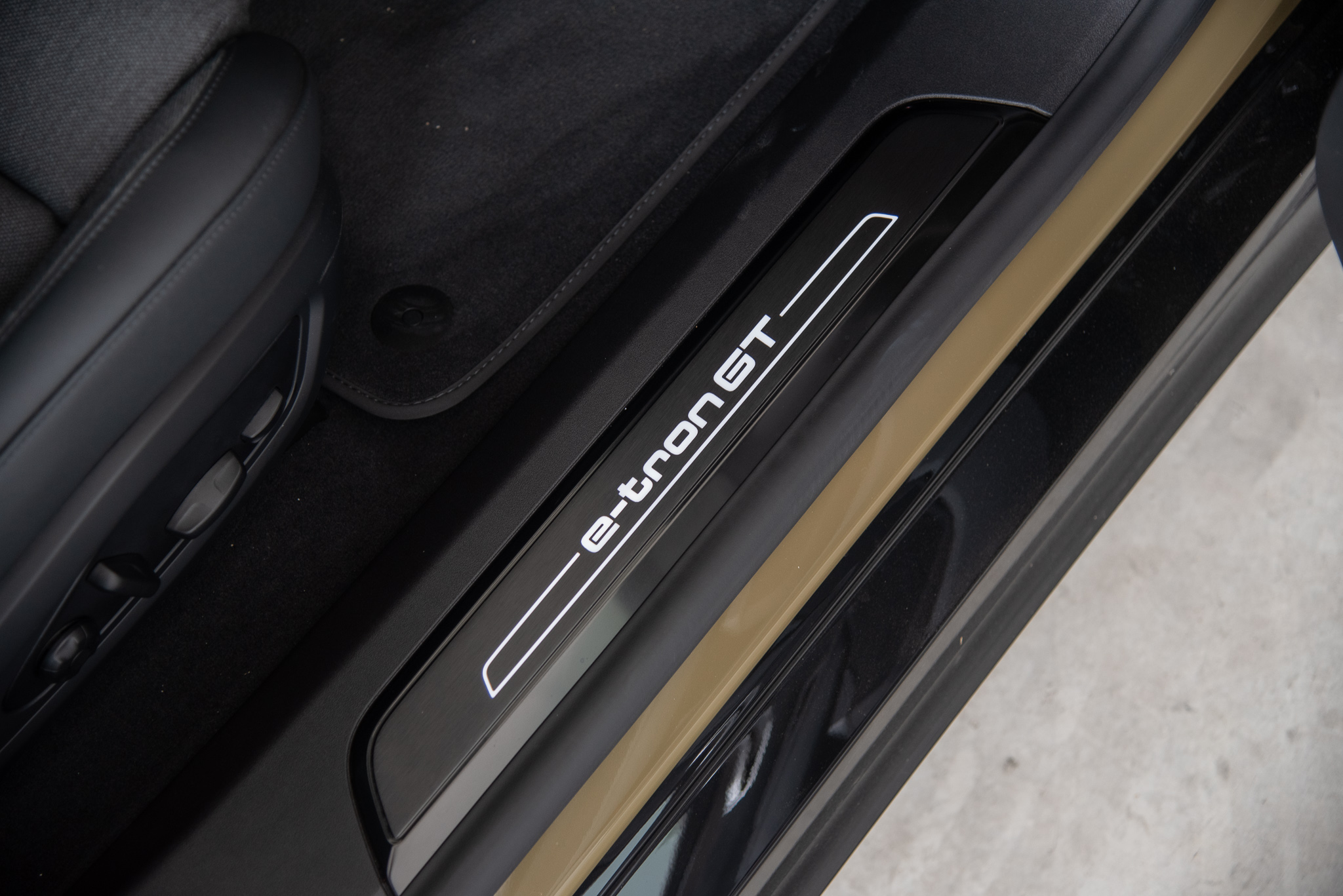
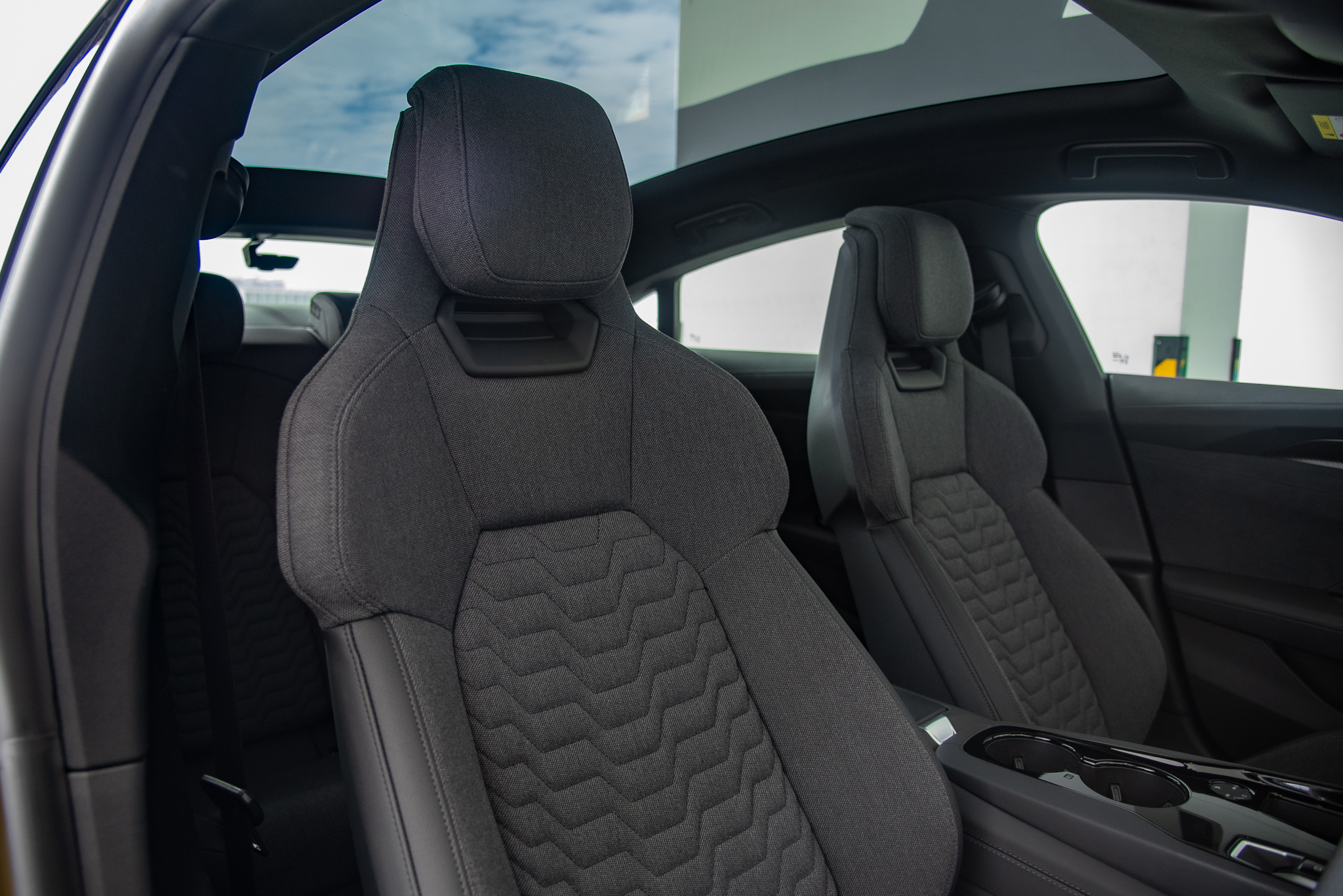
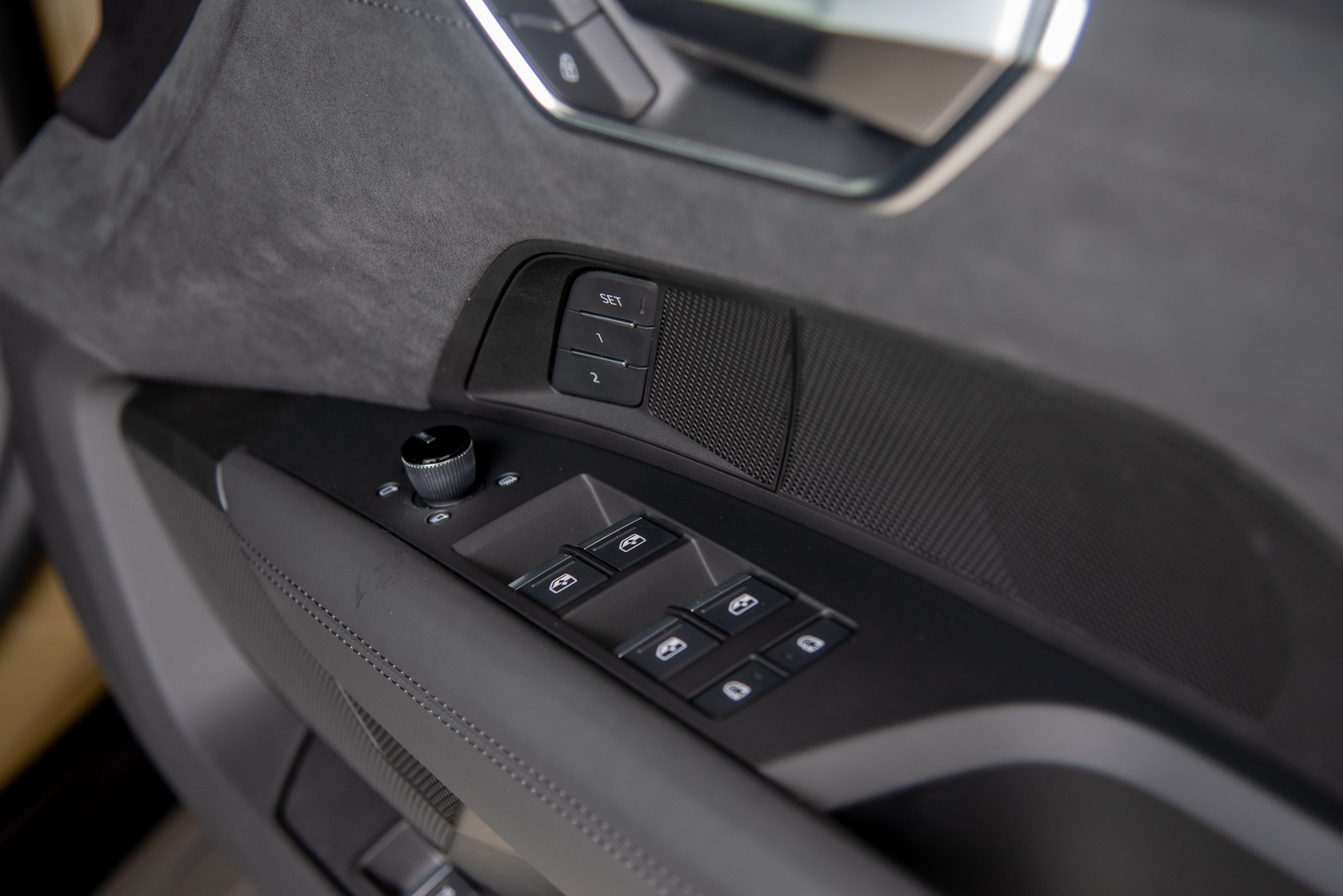
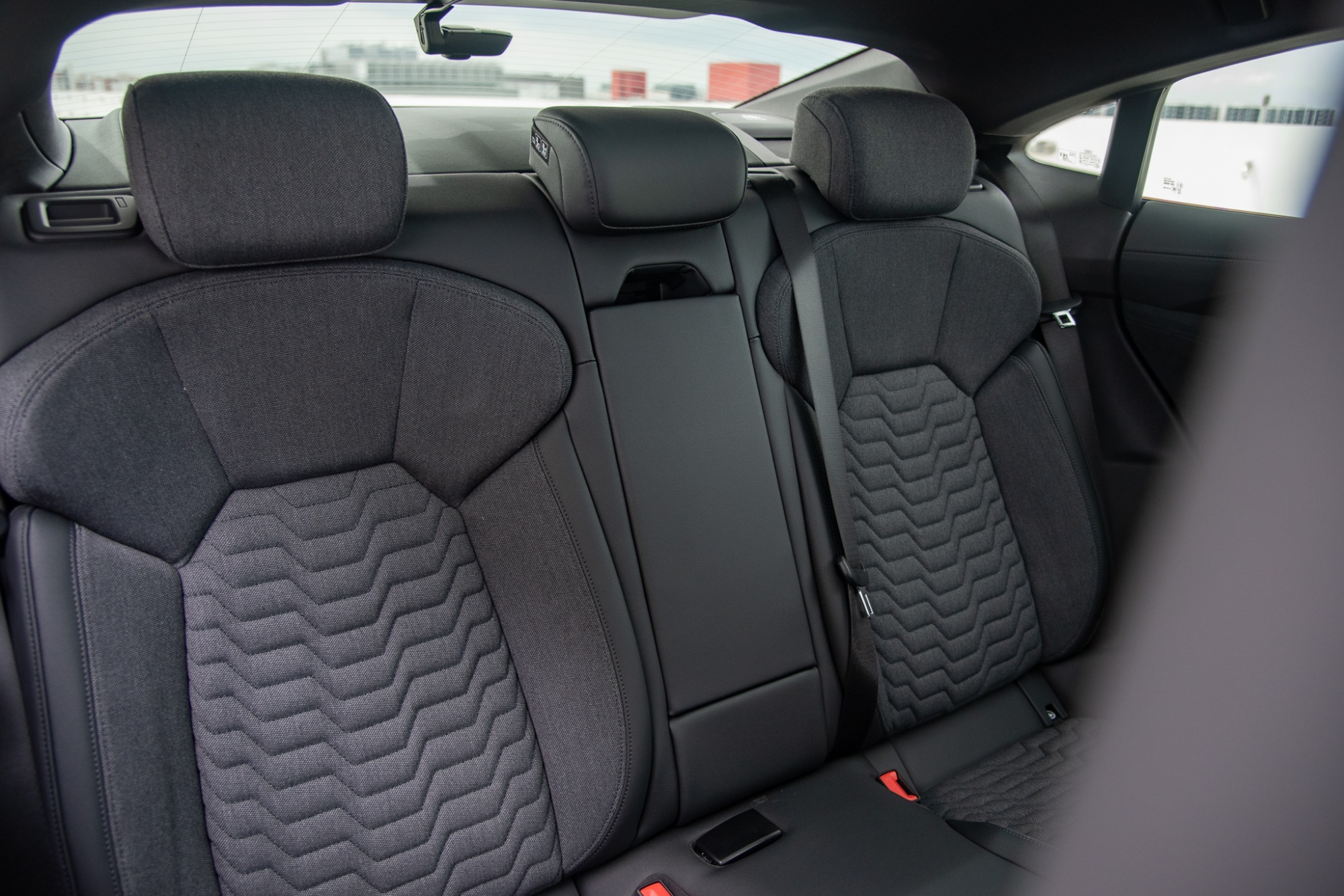
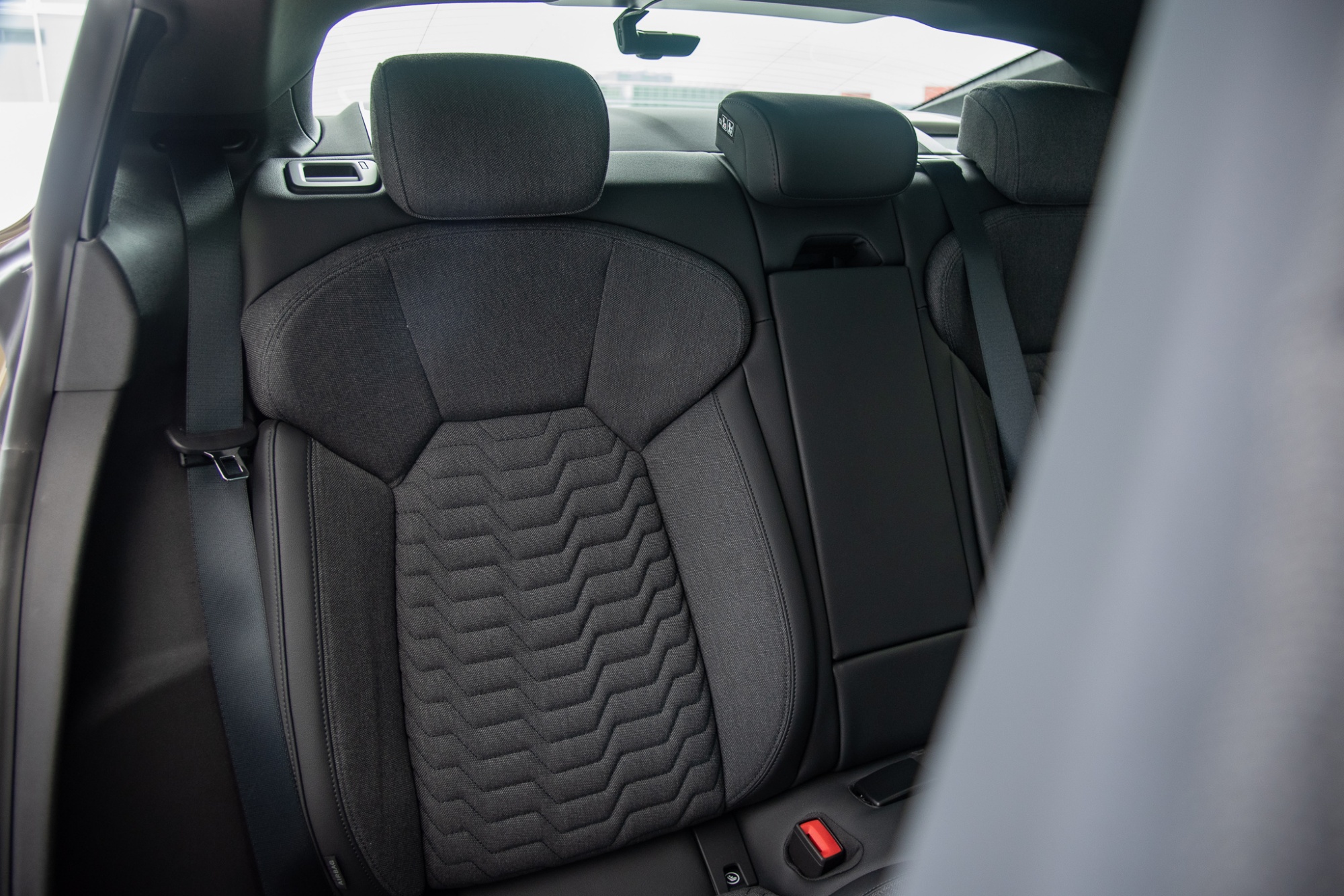
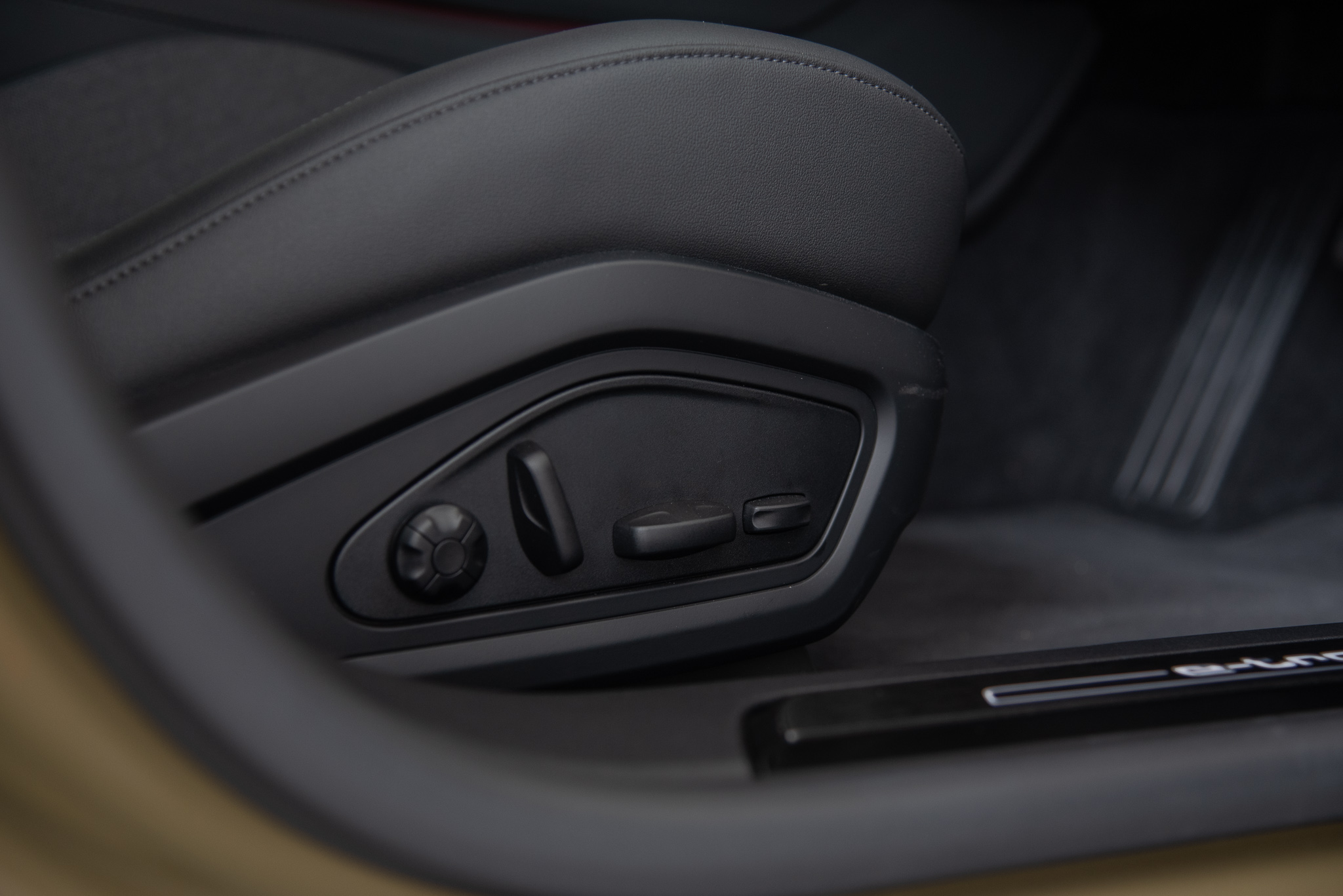

However, the e-tron GT’s sportier disposition does inevitably bequeath it with some sports car pitfalls. Rearward visibility is hampered, to say the least.
The 2+1 rear bench would provide adequate room for two passengers thanks to the two “foot garages” in the floorpan.
However, we’d recommend you leave the third seat for someone you dislike.
The fit and finish of the cabin is nothing short of stellar, but the recycled fabric upholstery in our test car may not suit all tastes.
Crucially, if you’re forking out upwards of S$560,000 for a performance grand tourer, chances are you would expect higher levels of refinement.
As a reference, similar money would get you into an Audi SQ7, with plenty of surplus cash for frivolous options like massage seats or acres of cowhide.
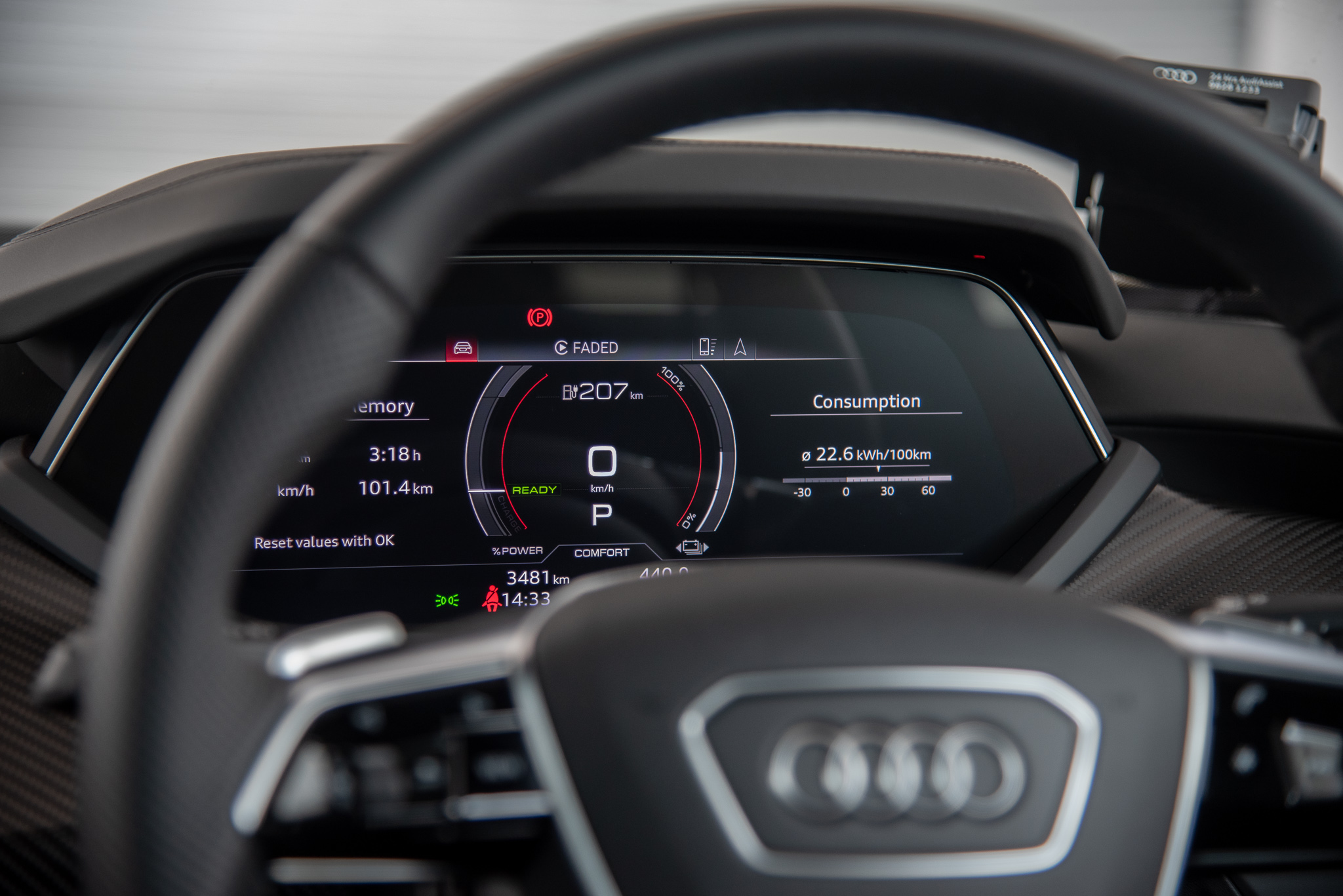
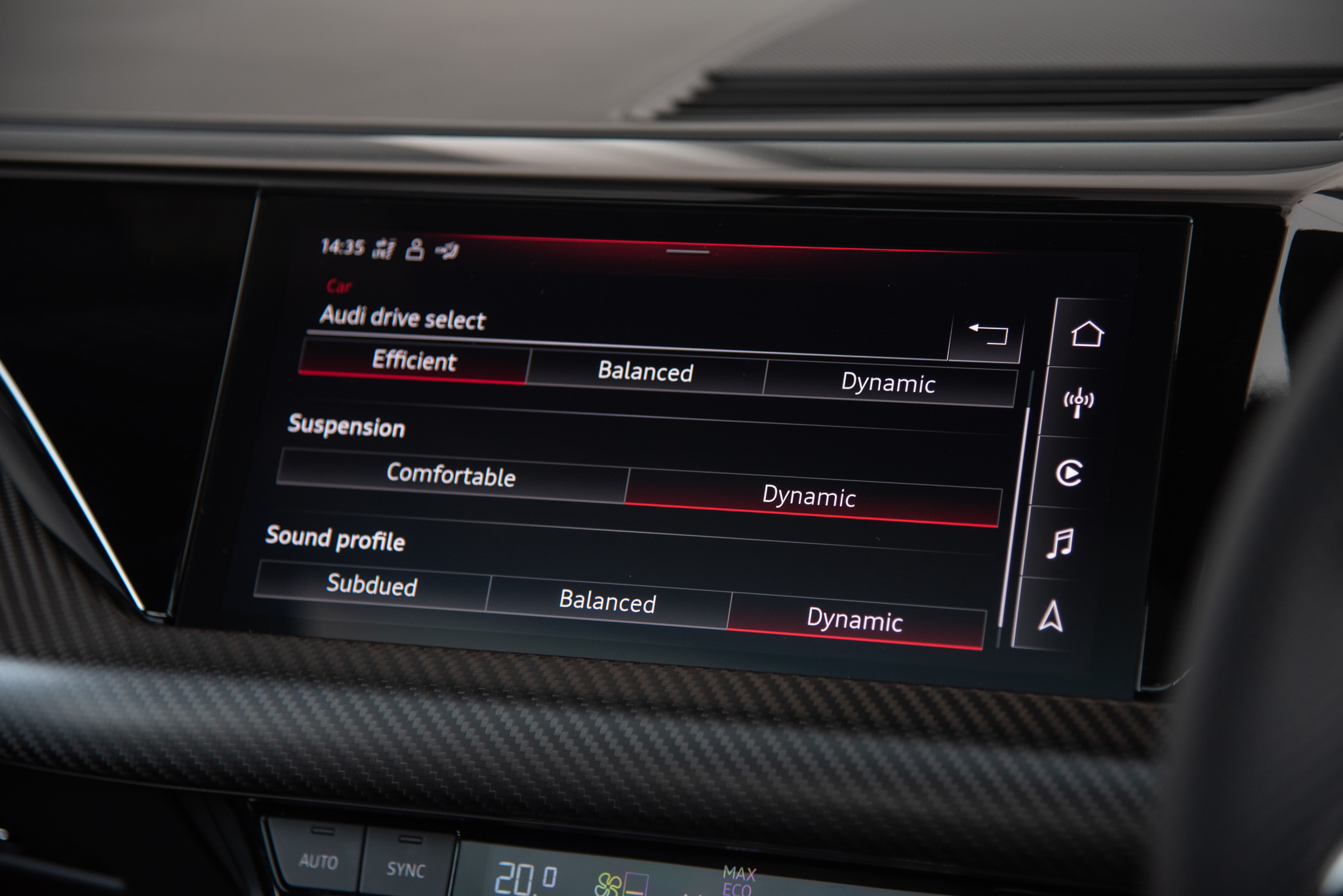
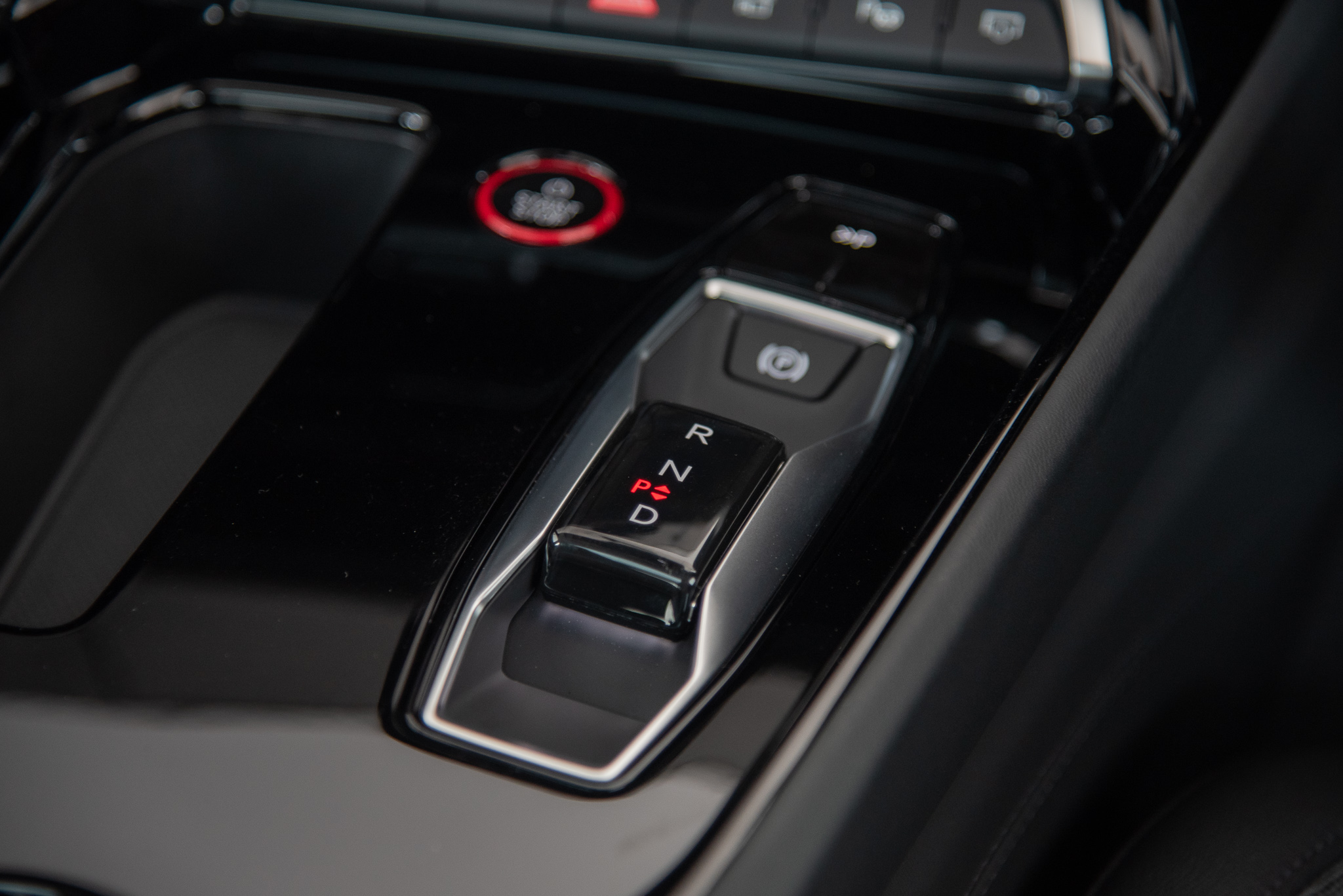
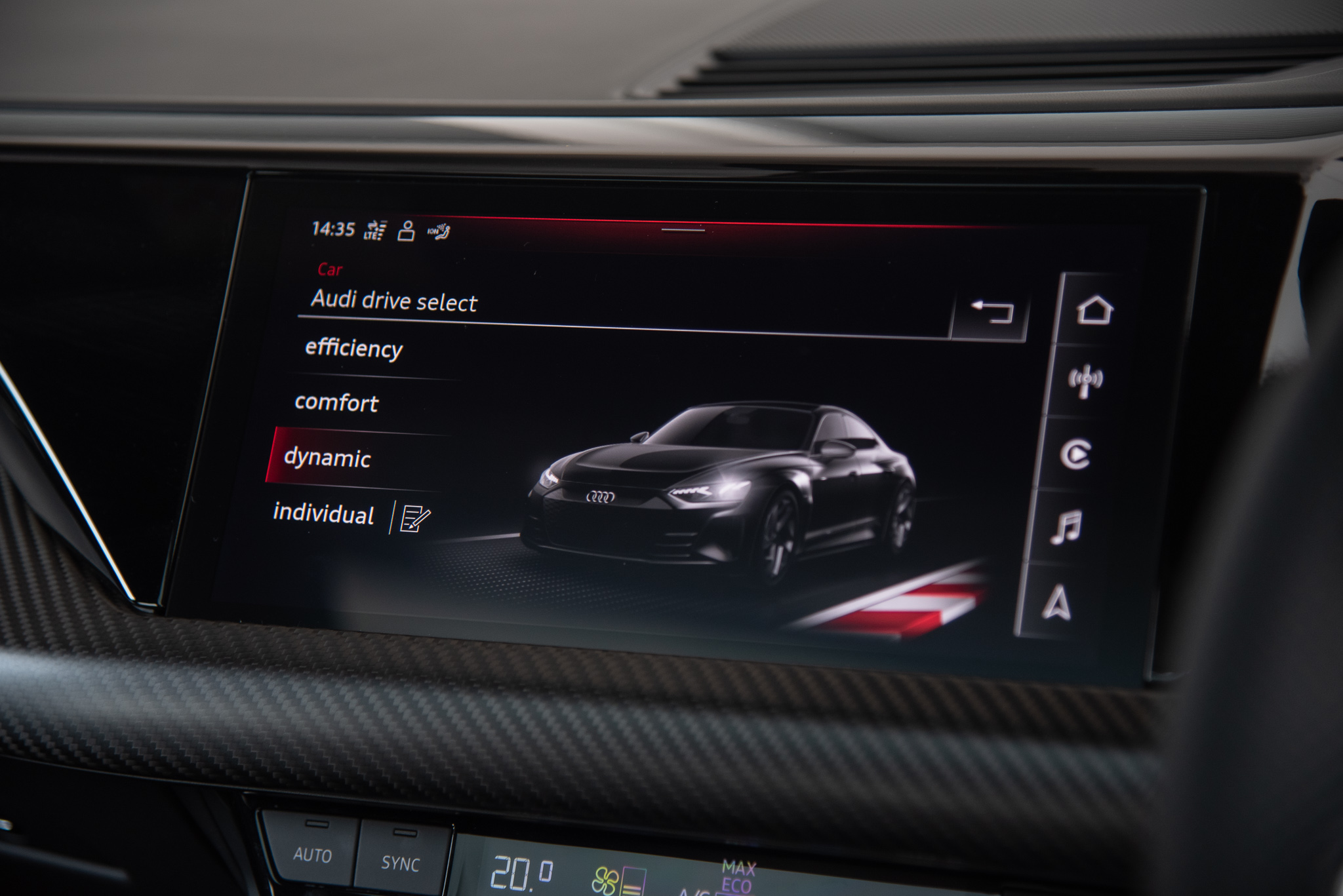
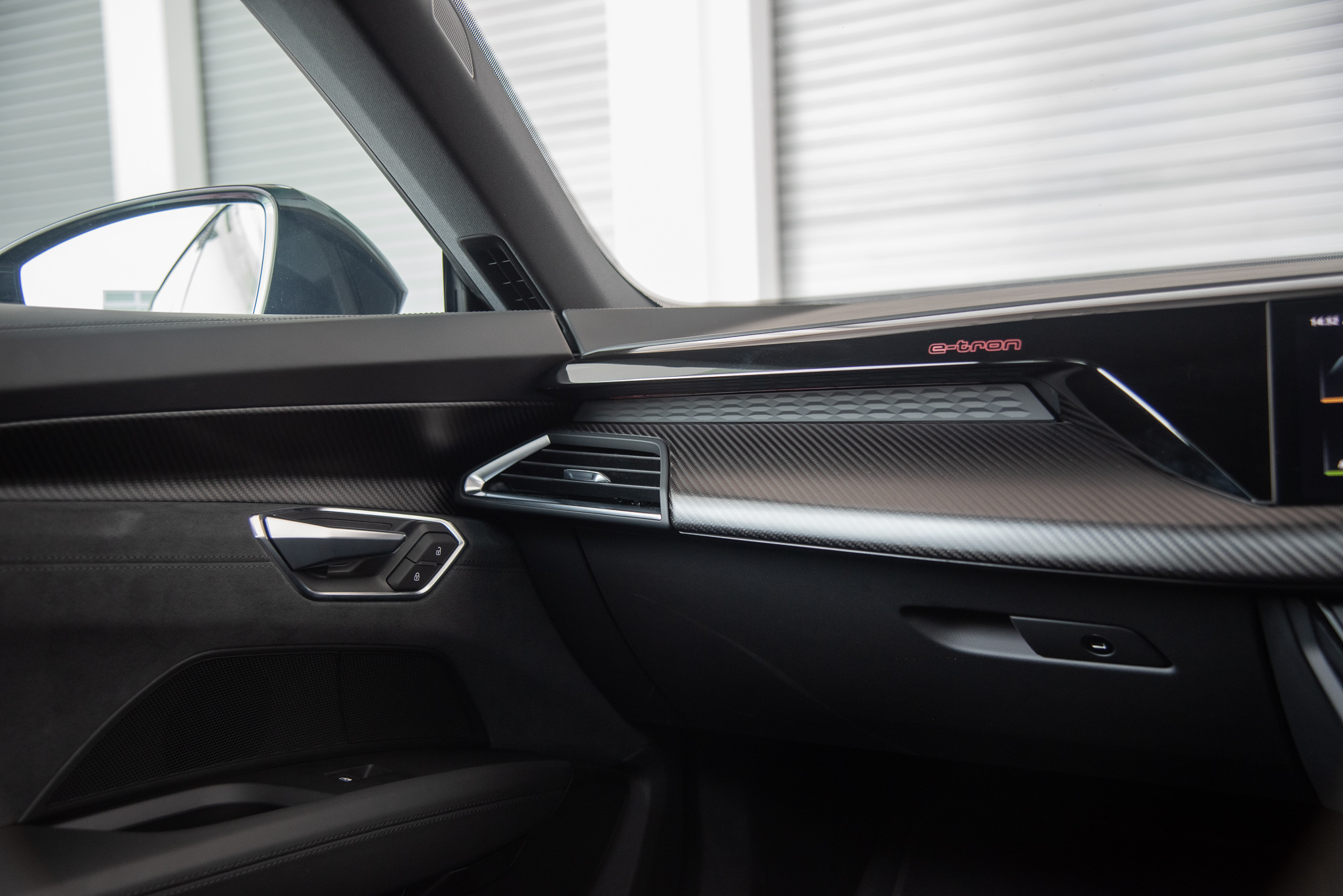
That being said, there aren’t many modern four-door GTs that can provide the same tactile sense of engagement that the e-tron GT provides. Notwithstanding the fact that it’s an electric vehicle. The driver’s seat is mounted low in the car so your legs are almost parallel to the ground. Everything on the dash and centre console is canted toward the driver with the control surfaces within easy reach for a more “focused” driving experience.
To that end, the e-tron GT feels… traditional. Conventional even. Couple that with the bassy dynamic sound profile, and you’d quite easily forget you’re at the helm of an electric car. Albeit, one that packs an almighty wallop.

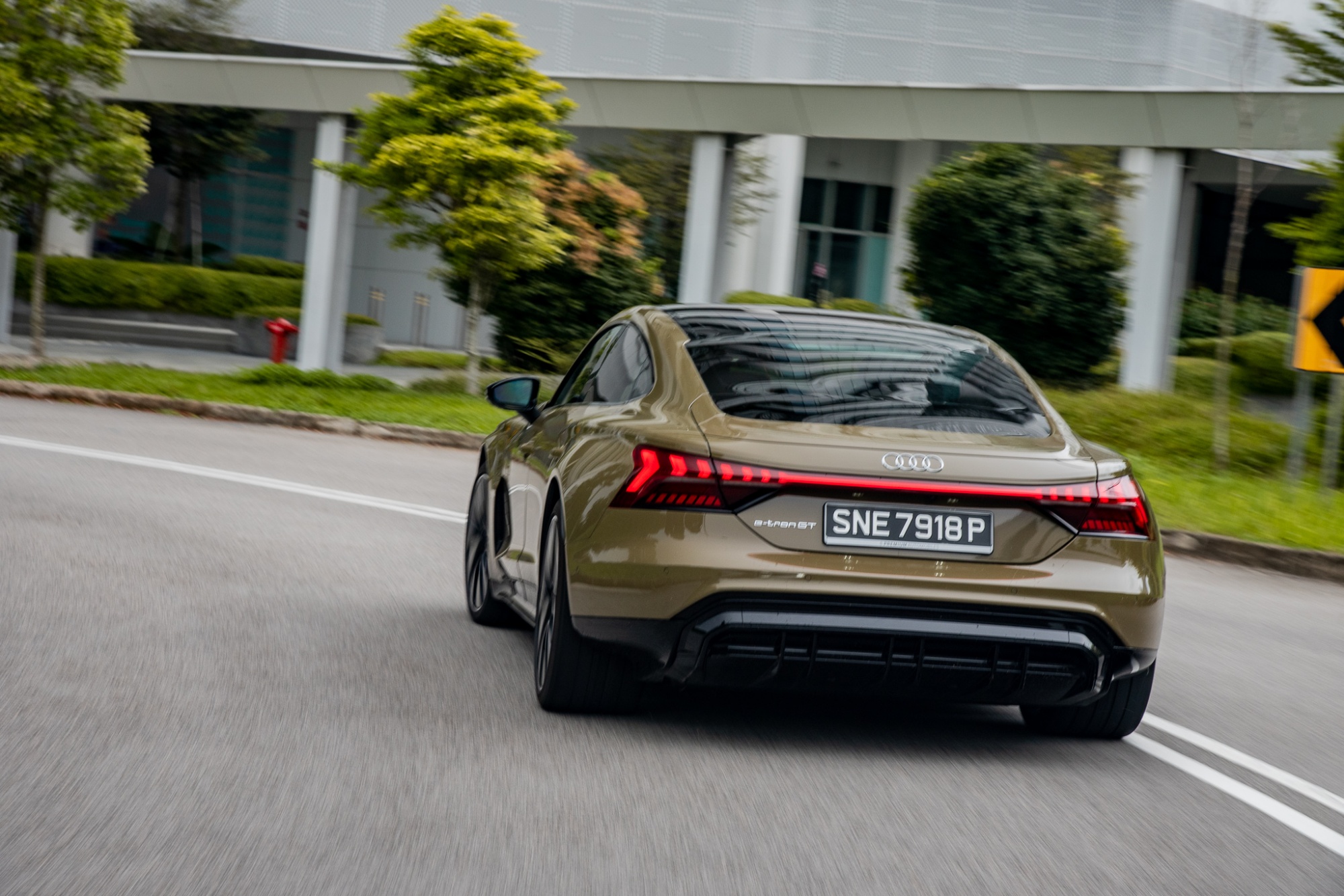

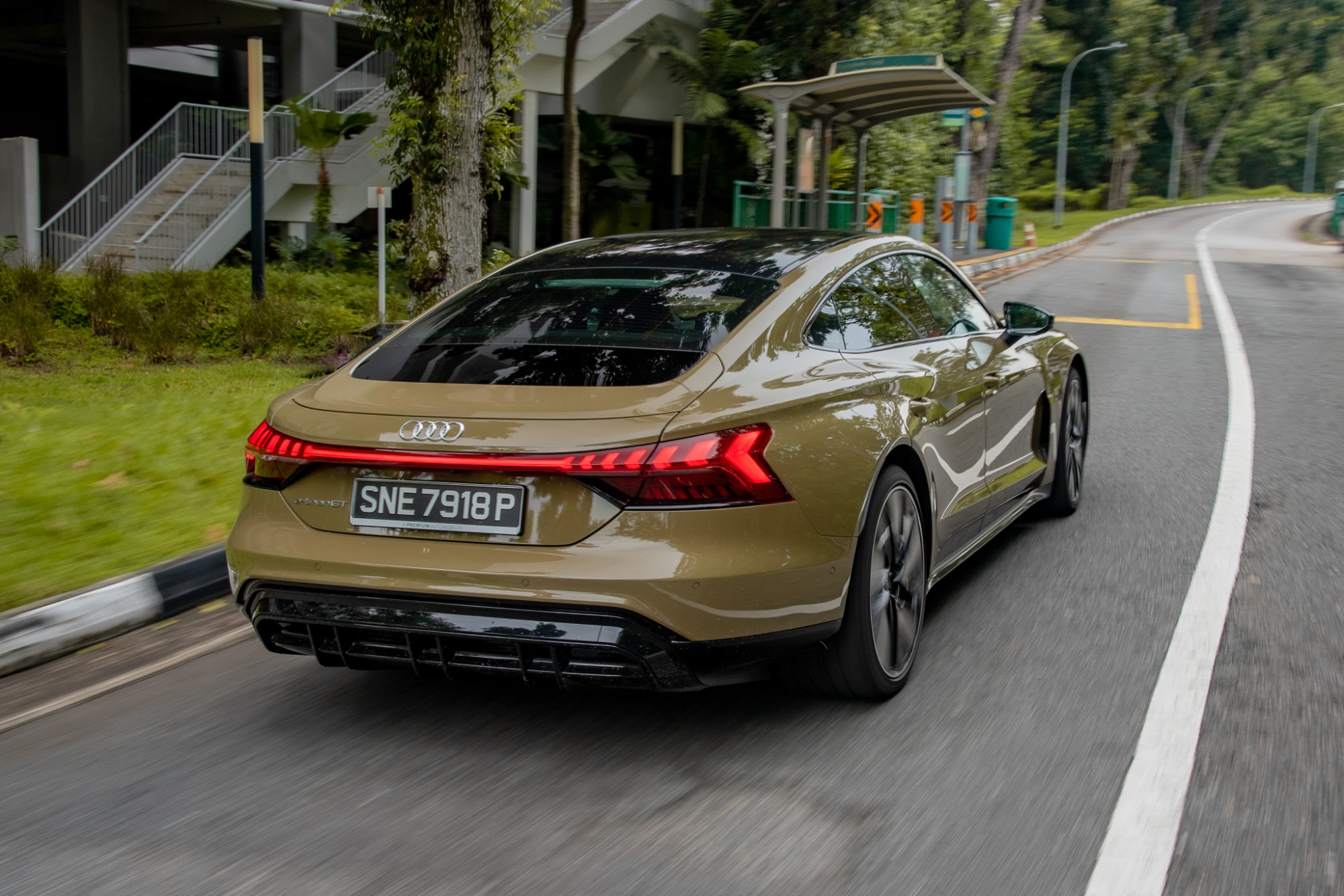

Having driven the e-tron GT extensively, it’s hard to justify the near S$150,000 divide between this and the RS e-tron GT. As it stands, the e-tron GT proved effortlessly quick and adequately potent with its 530hp/640Nm on boost. And it’s not as if you could utilise the full breadth of abilities the RS car has. Not unless you’d fancy spending a night in a prison cell or get slapped with a hefty speeding ticket.
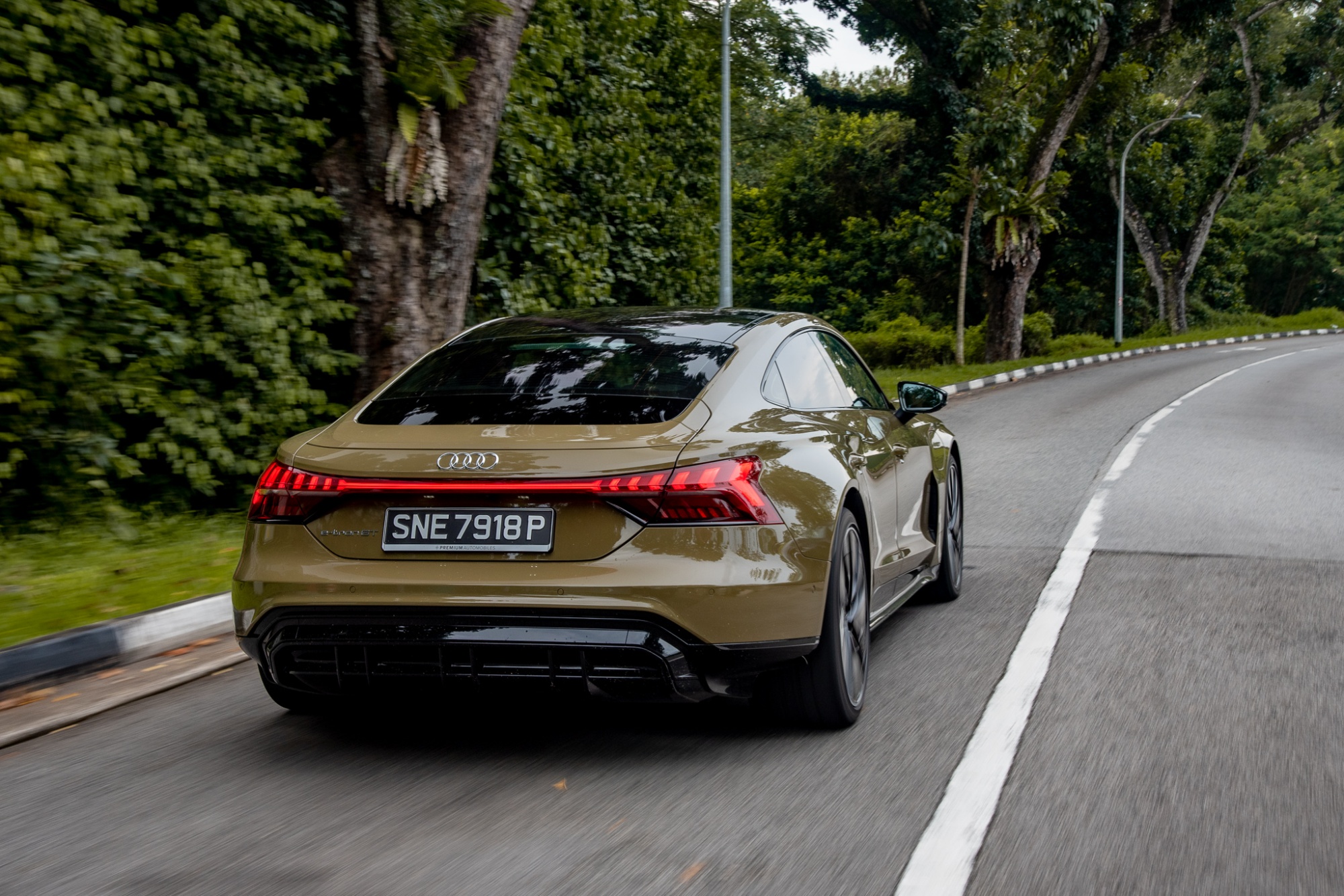
So would anyone need the brutally savage pace that the RS e-tron GT has? From a logical standpoint, I’d have to say no. For the time being at least…
But, would that stop interested parties from picking the RS car? I highly doubt so.
PHOTOS Jay Tee
Audi e-tron GT
Battery 93kWh (84kWh net), Li-Ion, 800V
Electric Motor 476hp/630Nm
Boost 530hp/640Nm
Electric Range up to 488km
0-100km/h 4.1secs
Top Speed 245km/h
LxBxH 4989x1964x1396m
Wheelbase 2900mm
Kerbweight 2276kg
Efficiency 19.6kWh/100km (Combined)
VES A1
